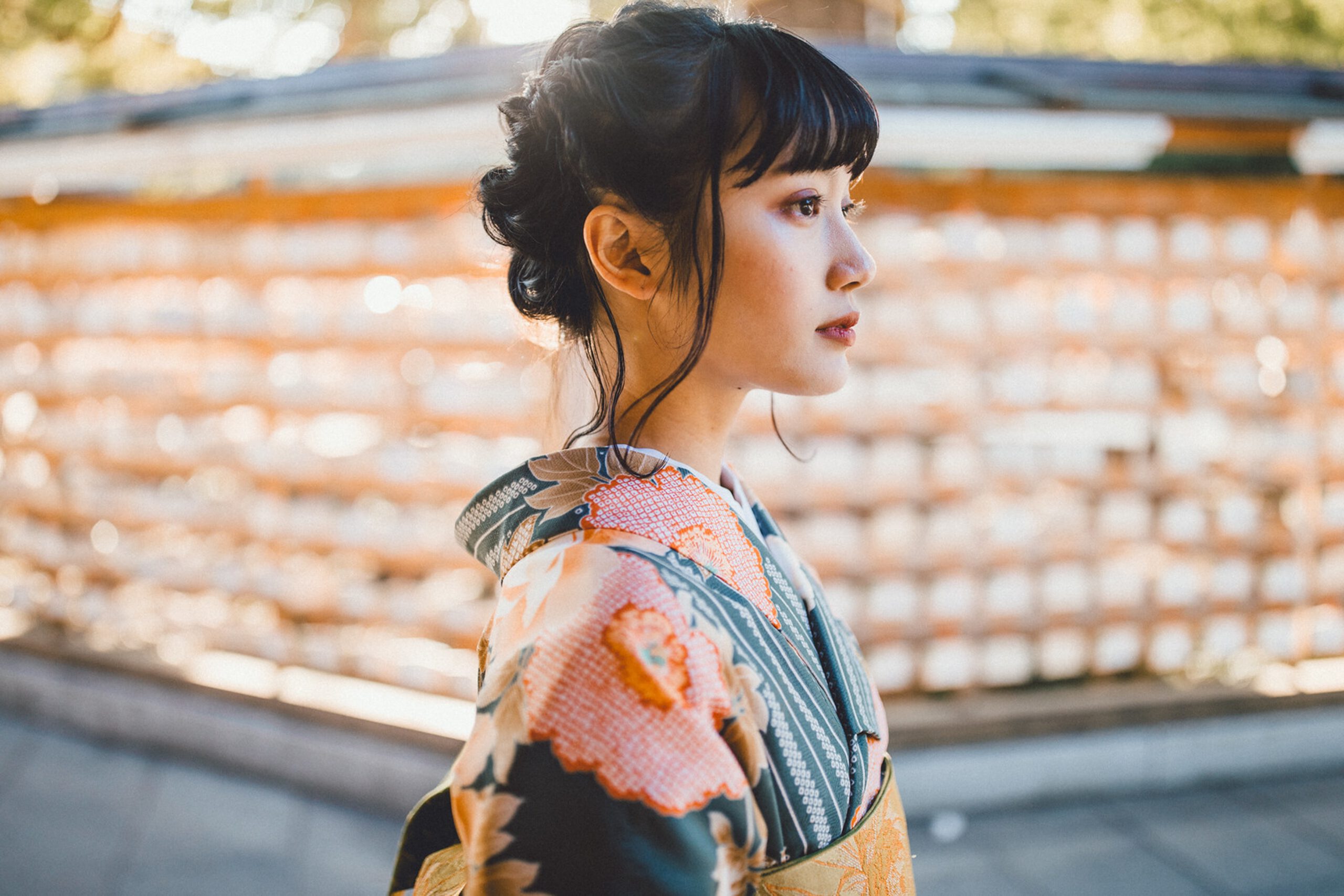
Japan Tours – Articles and Interests
Read our articles about Japan and Japanese culture
- Soapland
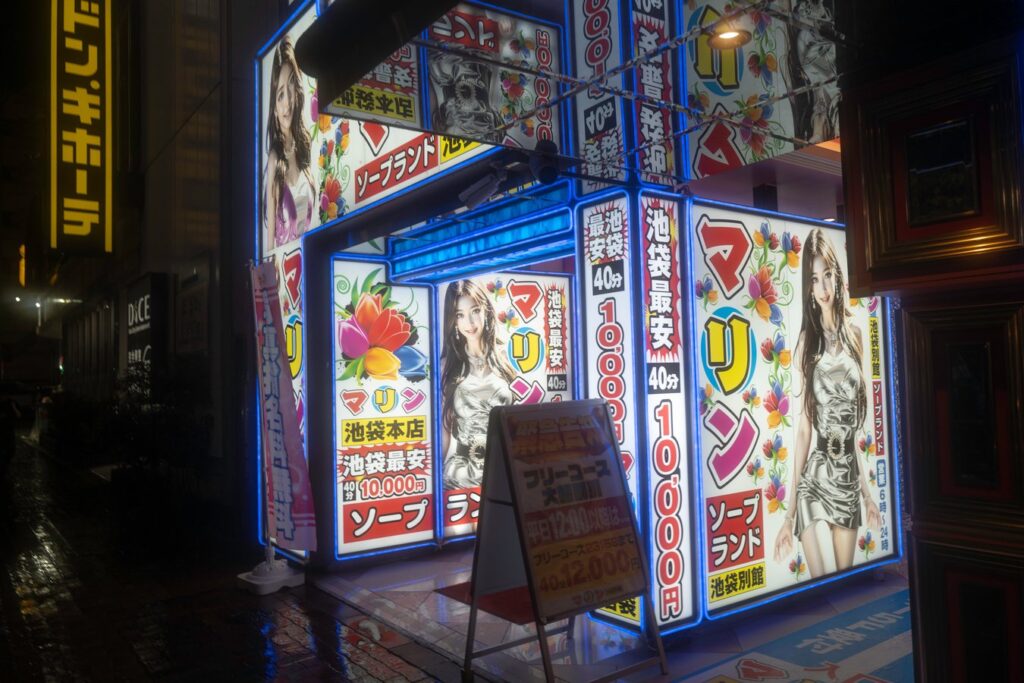 What Is Soap Land? Soap Land refers to establishments in Japan where women, known as “Soap Girls,” provide sexual services in private rooms equipped with beds and baths. Despite Japan’s Anti-Prostitution Law, Soap Land operates legally as the rooms are considered private spaces owned by the Soap Girls themselves. Customers pay separate fees for bathing… Read more: Soapland
What Is Soap Land? Soap Land refers to establishments in Japan where women, known as “Soap Girls,” provide sexual services in private rooms equipped with beds and baths. Despite Japan’s Anti-Prostitution Law, Soap Land operates legally as the rooms are considered private spaces owned by the Soap Girls themselves. Customers pay separate fees for bathing… Read more: Soapland - Nakameguro
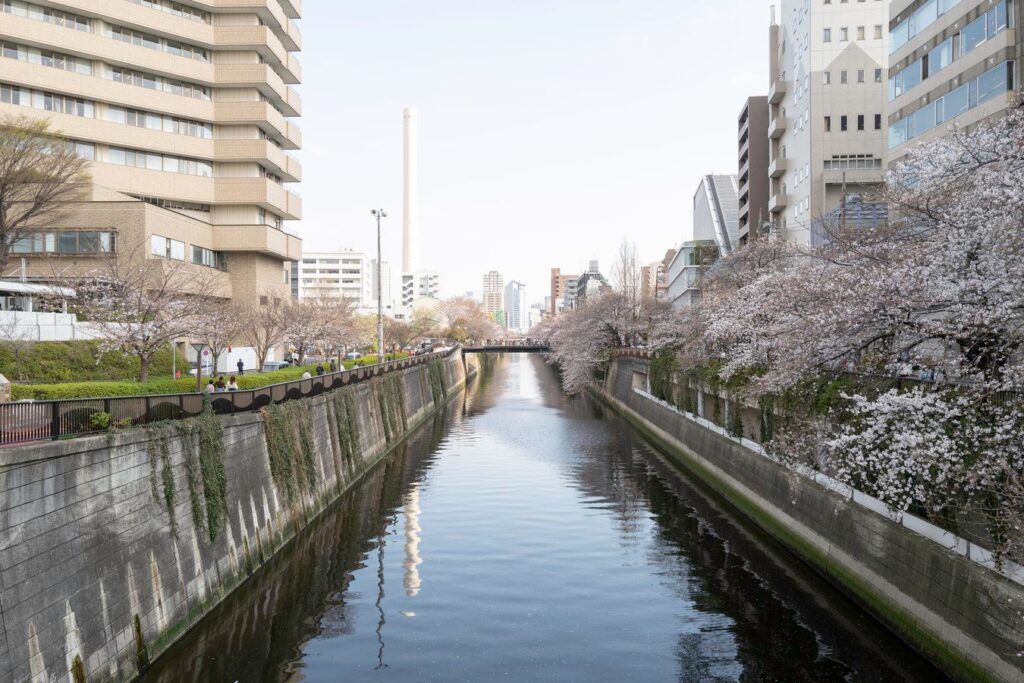 Discover Nakameguro, Tokyo’s chic riverside district, known for its trendy cafes, cherry blossoms along the Meguro River, and the unique Starbucks Reserve® Roastery Tokyo.
Discover Nakameguro, Tokyo’s chic riverside district, known for its trendy cafes, cherry blossoms along the Meguro River, and the unique Starbucks Reserve® Roastery Tokyo. - Ginza Six Roof Garden: A Green Escape
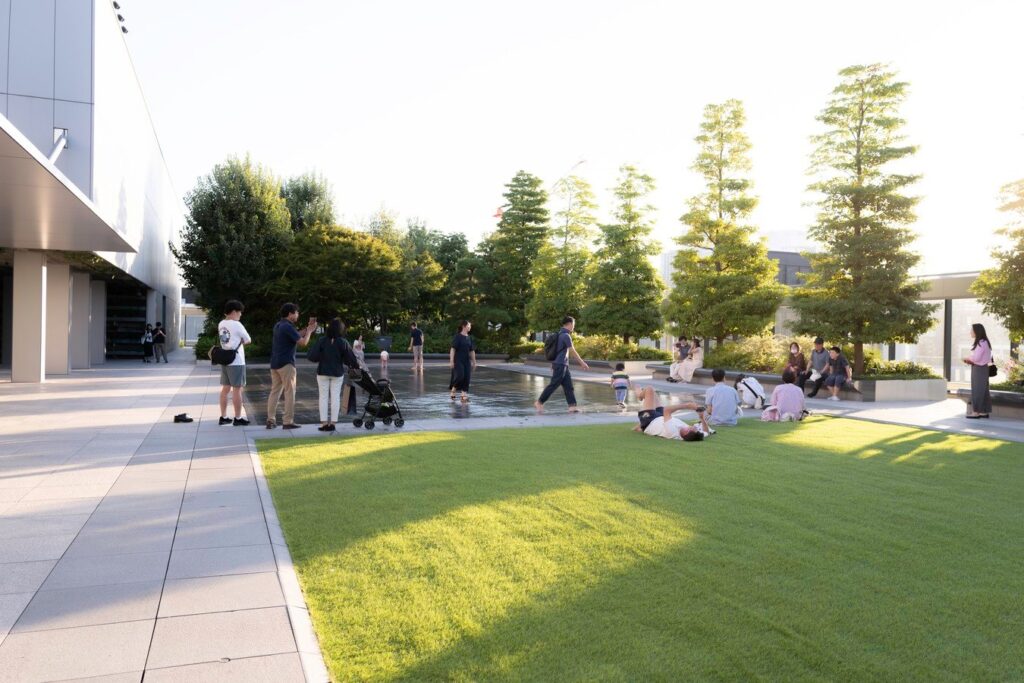 The Ginza Six Roof Garden offers a tranquil rooftop escape with grass zones, water features, and urban views.
The Ginza Six Roof Garden offers a tranquil rooftop escape with grass zones, water features, and urban views. - Dentsu Tower: Shiodome’s Architectural Icon
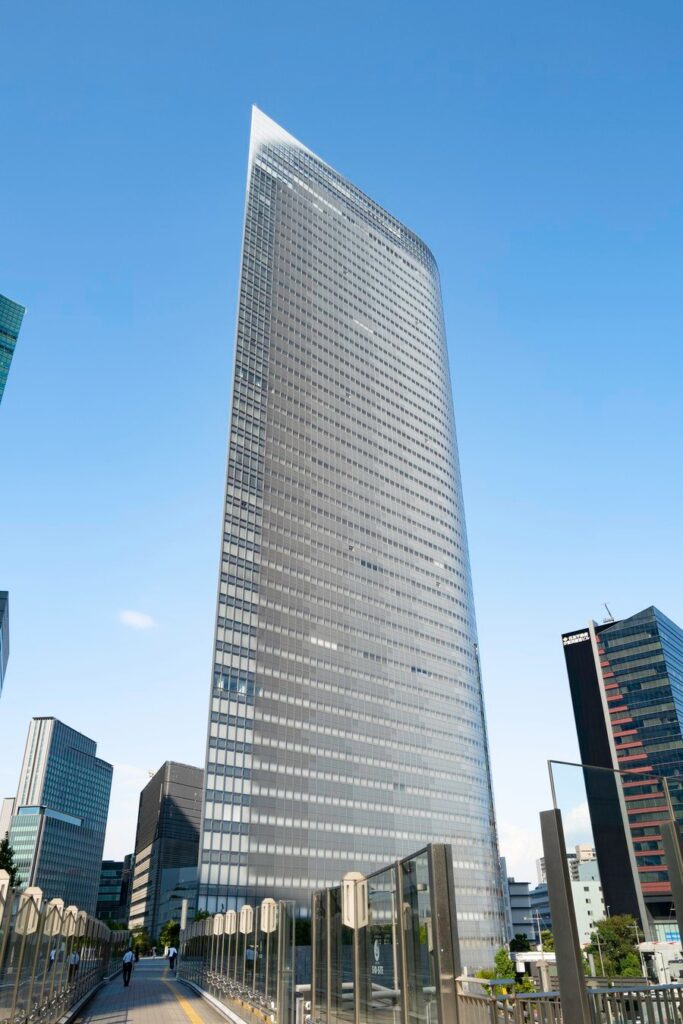 Dentsu Tower in Shiodome combines Jean Nouvel’s architectural brilliance with a public shopping hub and stunning city views.
Dentsu Tower in Shiodome combines Jean Nouvel’s architectural brilliance with a public shopping hub and stunning city views. - Kappabashi: Tokyo’s Kitchenware Street
 Kappabashi, Tokyo’s kitchenware street, offers knives, utensils, food samples, and unique souvenirs in a vibrant setting.
Kappabashi, Tokyo’s kitchenware street, offers knives, utensils, food samples, and unique souvenirs in a vibrant setting. - Kyoto Station: Modern Architecture and Transit HubKyoto Station is a modern transportation hub with futuristic architecture, key train and bus connections, and extensive amenities.
- Sento: Japan’s Communal Bathing Tradition
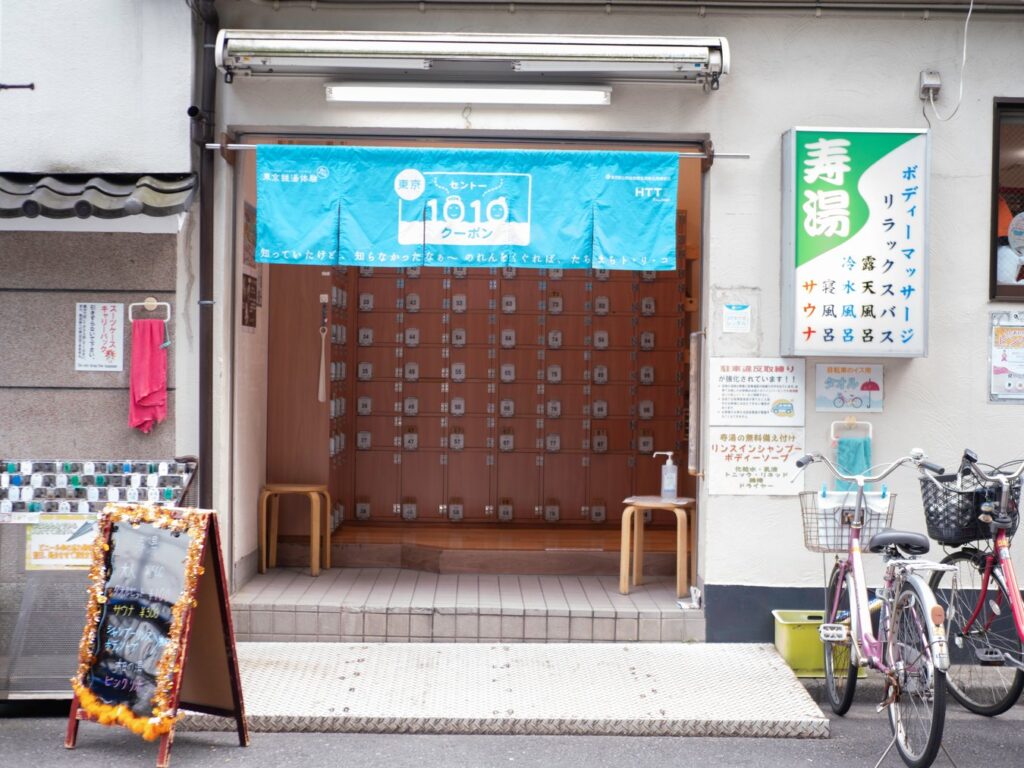 Sento are traditional Japanese public bathhouses offering communal bathing, relaxation, and a blend of tradition and modern amenities.
Sento are traditional Japanese public bathhouses offering communal bathing, relaxation, and a blend of tradition and modern amenities. - Mastering the Art of Ordering Ramen in Japan
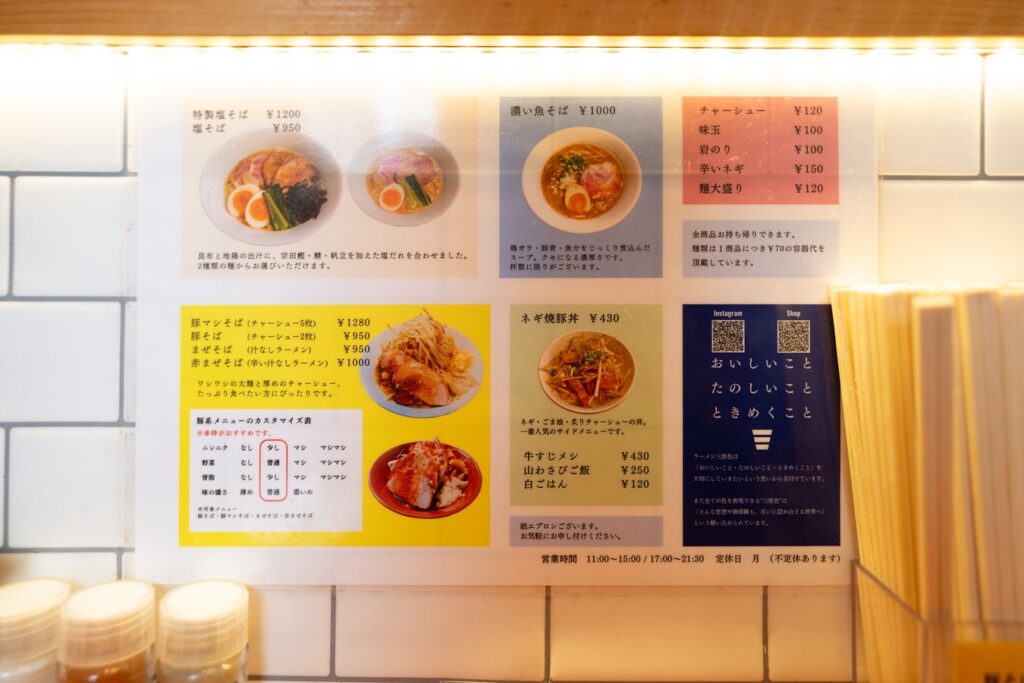 Learn how to navigate Japan’s ramen shops, from using ticket machines to customizing noodles, soup, and toppings.
Learn how to navigate Japan’s ramen shops, from using ticket machines to customizing noodles, soup, and toppings. - Kagurazaka: A Fusion of Tradition and EleganceKagurazaka blends Japanese tradition and French elegance, offering cobbled streets, gourmet spots, cultural festivals, and historical landmarks.
- Ebisu: Tokyo’s Blend of Sophistication and Culture
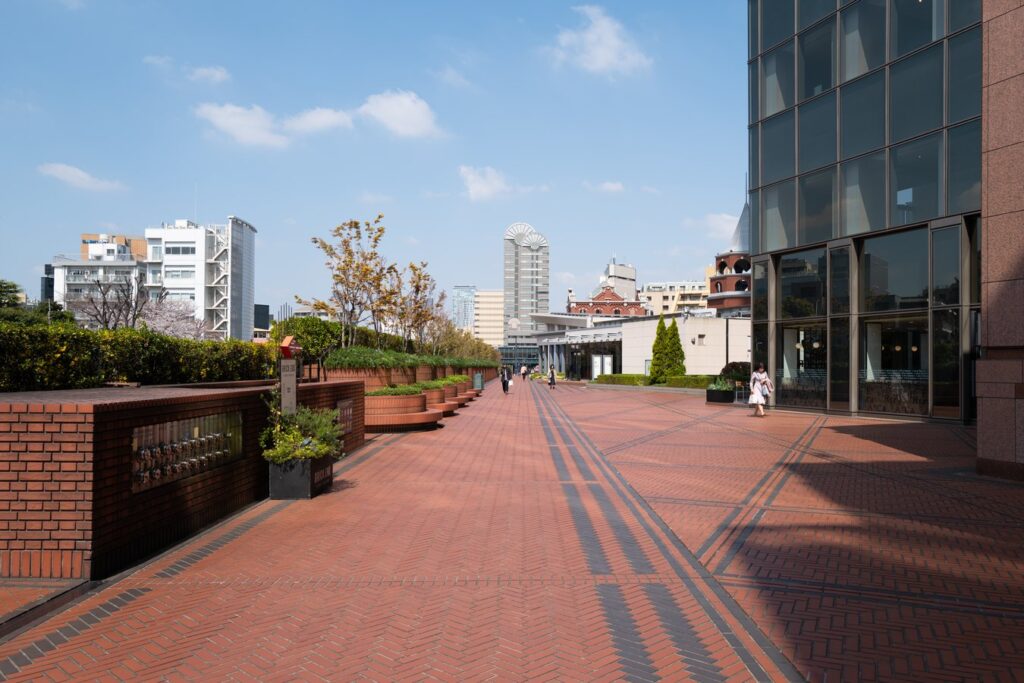 Ebisu combines Tokyo’s modern sophistication with cultural attractions like Yebisu Beer, fine dining, and vibrant nightlife.
Ebisu combines Tokyo’s modern sophistication with cultural attractions like Yebisu Beer, fine dining, and vibrant nightlife. - Moerenuma Park: Art Meets Nature in Sapporo
 Moerenuma Park in Sapporo blends art, nature, and sustainability, offering seasonal activities, cultural exhibitions, and family-friendly attractions.
Moerenuma Park in Sapporo blends art, nature, and sustainability, offering seasonal activities, cultural exhibitions, and family-friendly attractions. - NTT ICC: Shinjuku’s Media Art Space
 NTT ICC in Shinjuku’s Tokyo Opera City hosts media art exhibitions and activities exploring the intersection of art and technology.
NTT ICC in Shinjuku’s Tokyo Opera City hosts media art exhibitions and activities exploring the intersection of art and technology. - Tokyo Disneyland: Essential Visit Guide
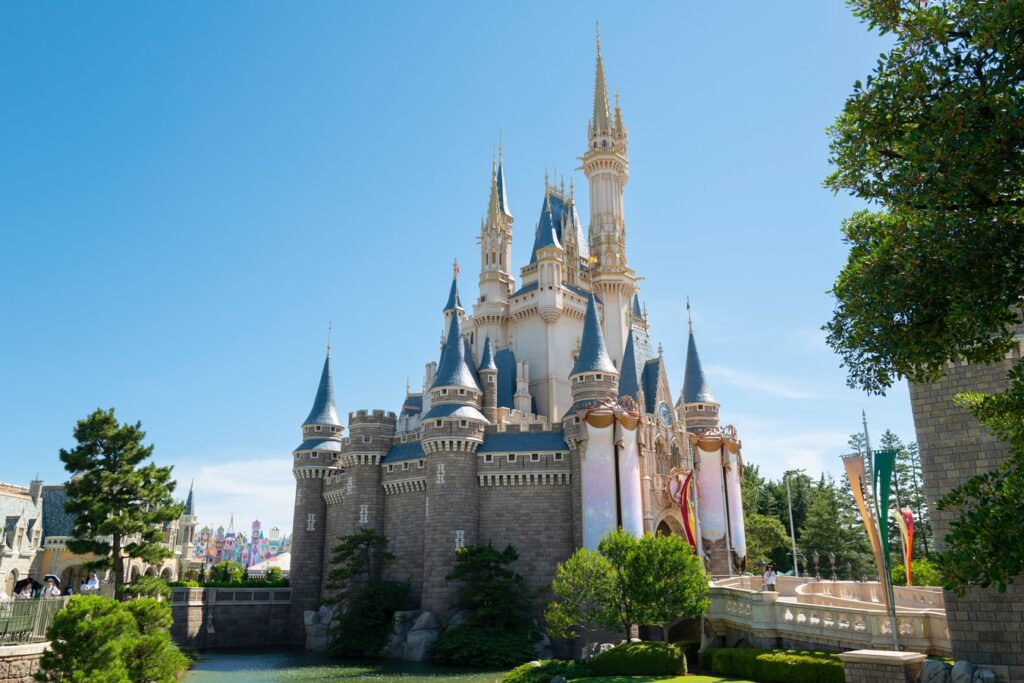 Plan your Tokyo Disneyland visit with tips on tickets, food, queue systems, and photo opportunities.
Plan your Tokyo Disneyland visit with tips on tickets, food, queue systems, and photo opportunities. - Tokyo Metropolitan Government Building: A Modern Landmark
 The Tokyo Metropolitan Government Building, designed by Kenzō Tange, blends tradition and modernity, symbolizing Tokyo’s urban transformation.
The Tokyo Metropolitan Government Building, designed by Kenzō Tange, blends tradition and modernity, symbolizing Tokyo’s urban transformation. - Gotokuji Temple: Home of the Lucky Cat
 Gotokuji Temple in Setagaya, Tokyo, is known for its connection to the maneki-neko figurines, offering a serene experience for cat lovers and cultural enthusiasts.
Gotokuji Temple in Setagaya, Tokyo, is known for its connection to the maneki-neko figurines, offering a serene experience for cat lovers and cultural enthusiasts. - Nara: Japan’s Cultural and Natural Haven
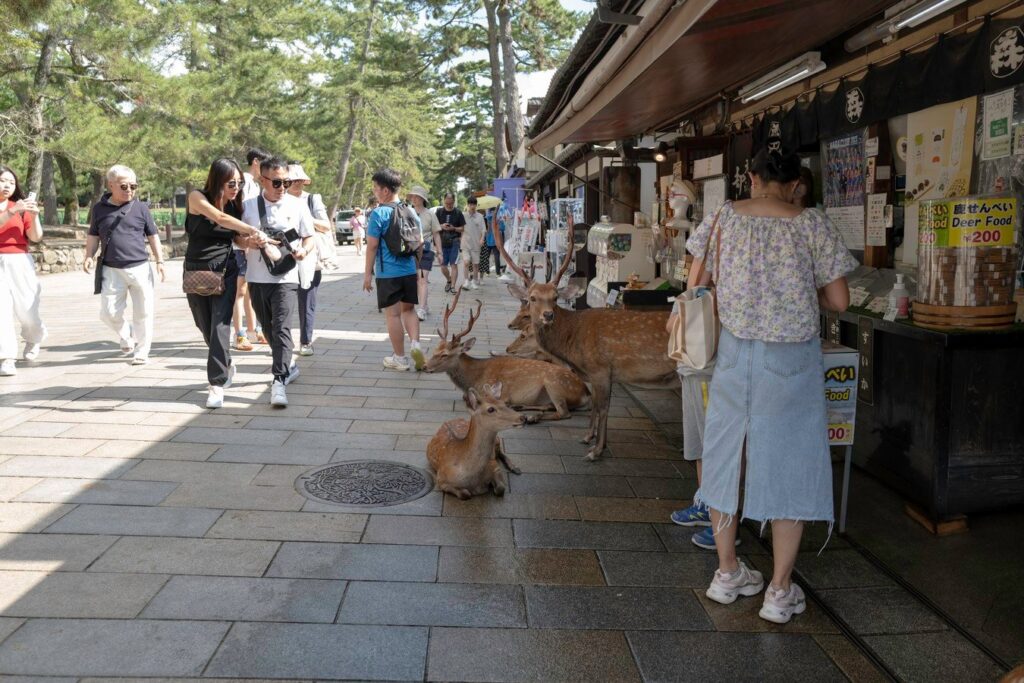 Nara blends ancient temples, serene gardens, and free-roaming deer, making it a must-visit cultural and natural destination near Osaka and Kyoto.
Nara blends ancient temples, serene gardens, and free-roaming deer, making it a must-visit cultural and natural destination near Osaka and Kyoto. - Eki Stamp: Japan’s Train Station Collectible
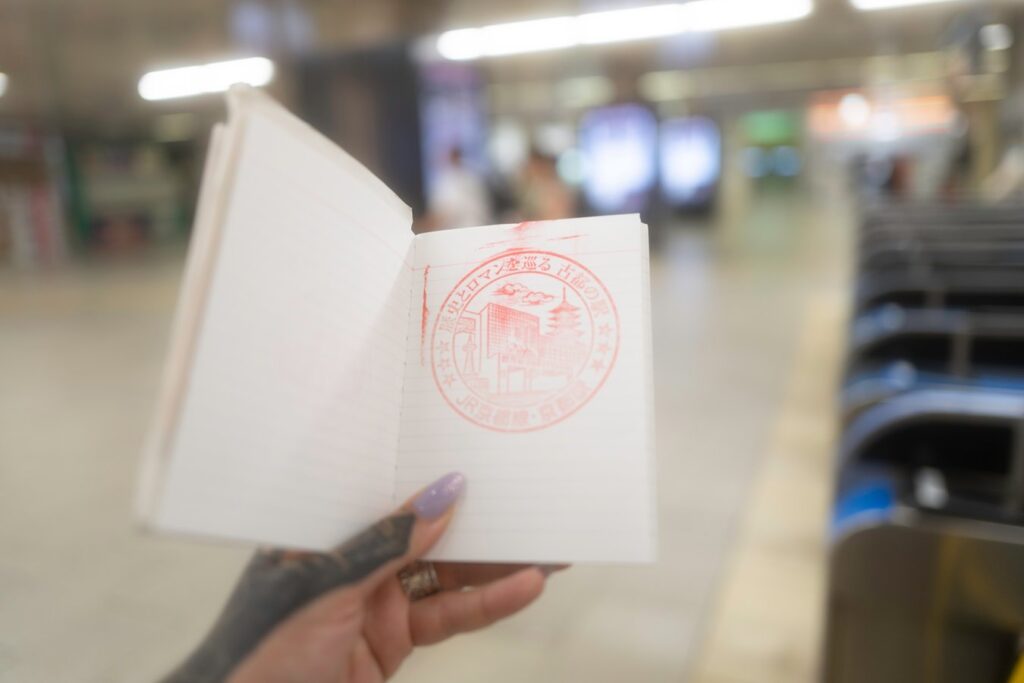 Eki stamps are collectible rubber ink stamps found at train stations in Japan, featuring designs of landmarks and local culture.
Eki stamps are collectible rubber ink stamps found at train stations in Japan, featuring designs of landmarks and local culture. - Daruma Dolls: Tradition and Meaning
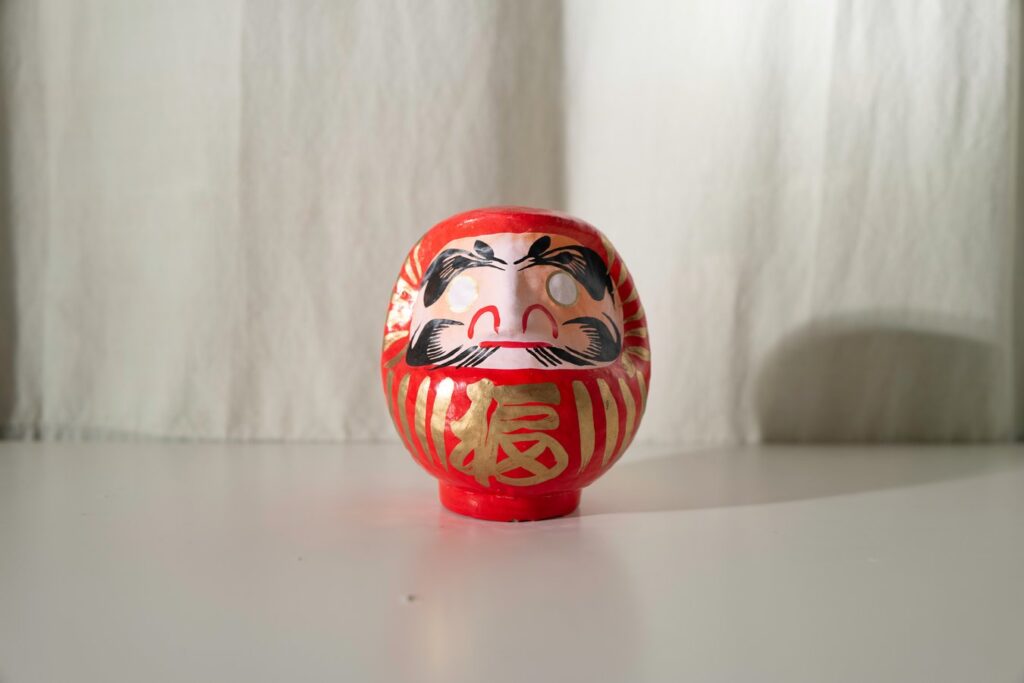 Daruma dolls are Japanese papier-mâché figures symbolizing perseverance and goal-setting, with a unique tradition of painting their eyes as part of wish-making.
Daruma dolls are Japanese papier-mâché figures symbolizing perseverance and goal-setting, with a unique tradition of painting their eyes as part of wish-making. - Aoyama Cemetery: Tokyo’s Historic Resting Place
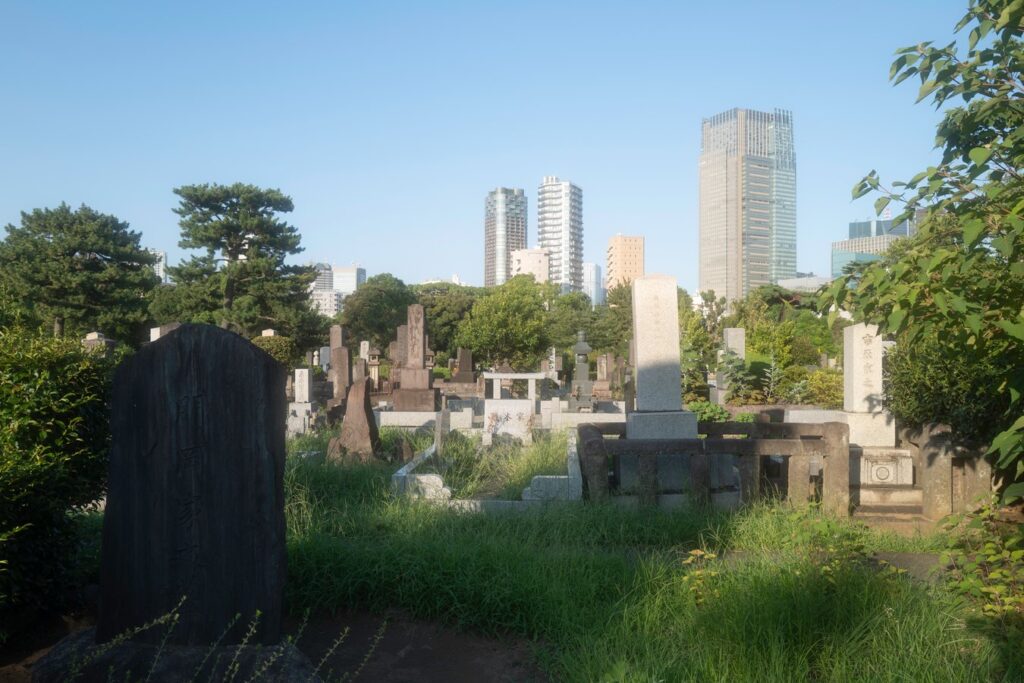 Aoyama Cemetery in Tokyo is a historic site known for notable graves, a foreign section, and cherry blossom viewing during hanami.
Aoyama Cemetery in Tokyo is a historic site known for notable graves, a foreign section, and cherry blossom viewing during hanami. - Maneki-neko: Japan’s Beckoning Cat of Fortune
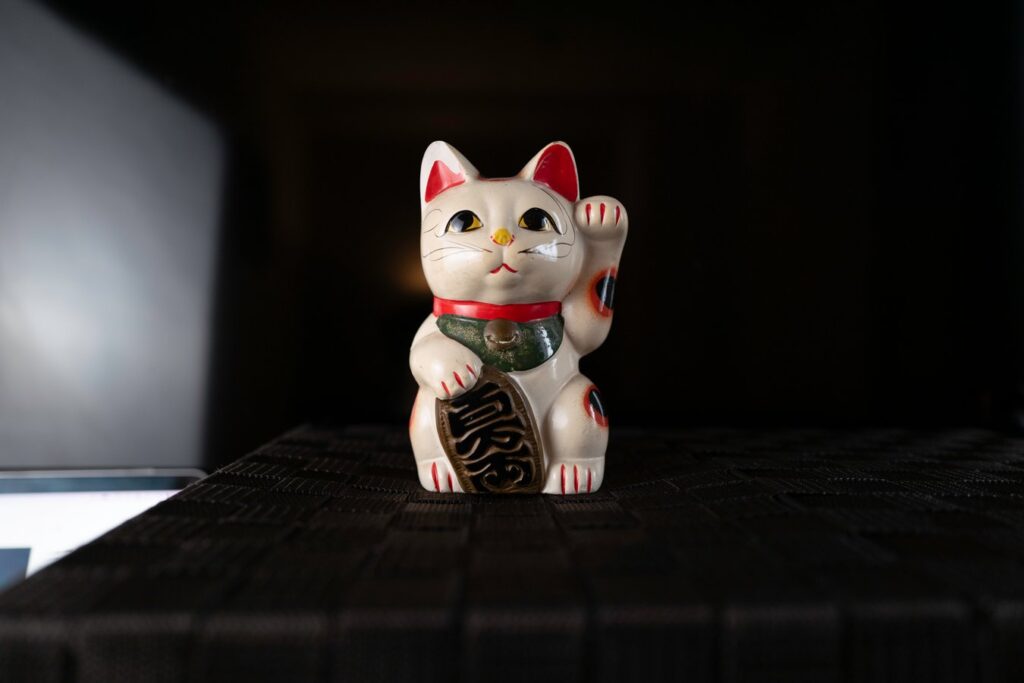 Maneki-neko, Japan’s beckoning cat, symbolizes good luck and prosperity. Learn about its designs, uses, and cultural significance.
Maneki-neko, Japan’s beckoning cat, symbolizes good luck and prosperity. Learn about its designs, uses, and cultural significance. - Tokyo Opera City Art Gallery: Modern Art and Emerging Talent
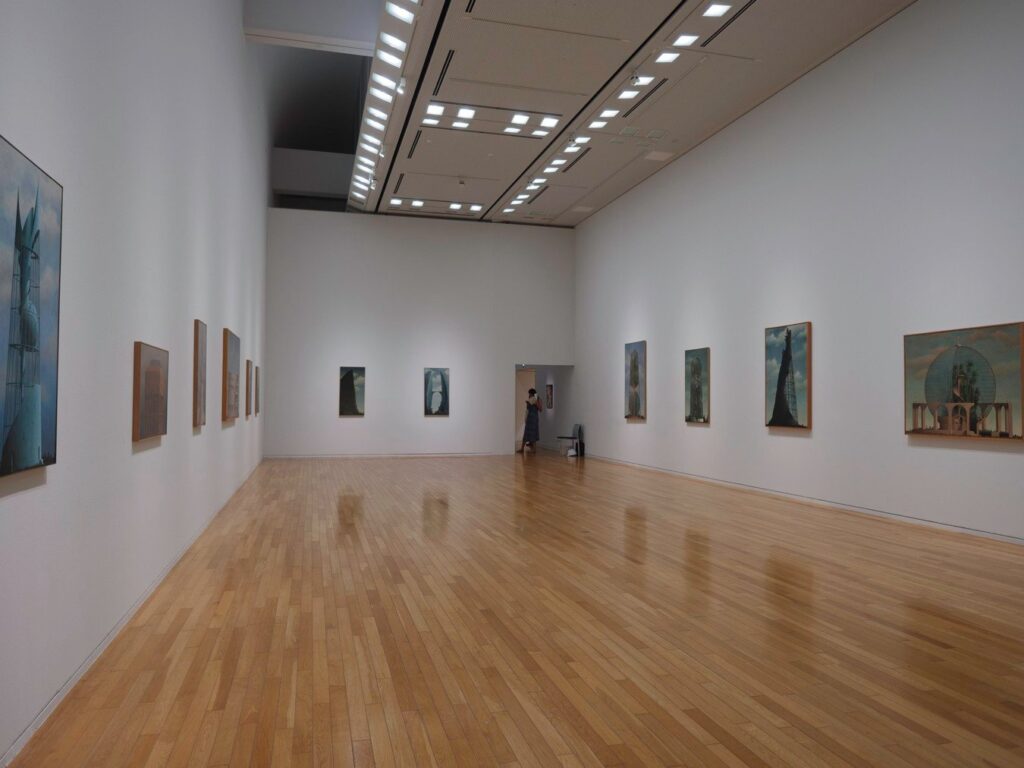 Tokyo Opera City Art Gallery hosts modern art exhibitions and features the “project N” series for emerging Japanese artists.
Tokyo Opera City Art Gallery hosts modern art exhibitions and features the “project N” series for emerging Japanese artists. - NTT InterCommunication Center: Tokyo’s Media Art Hub
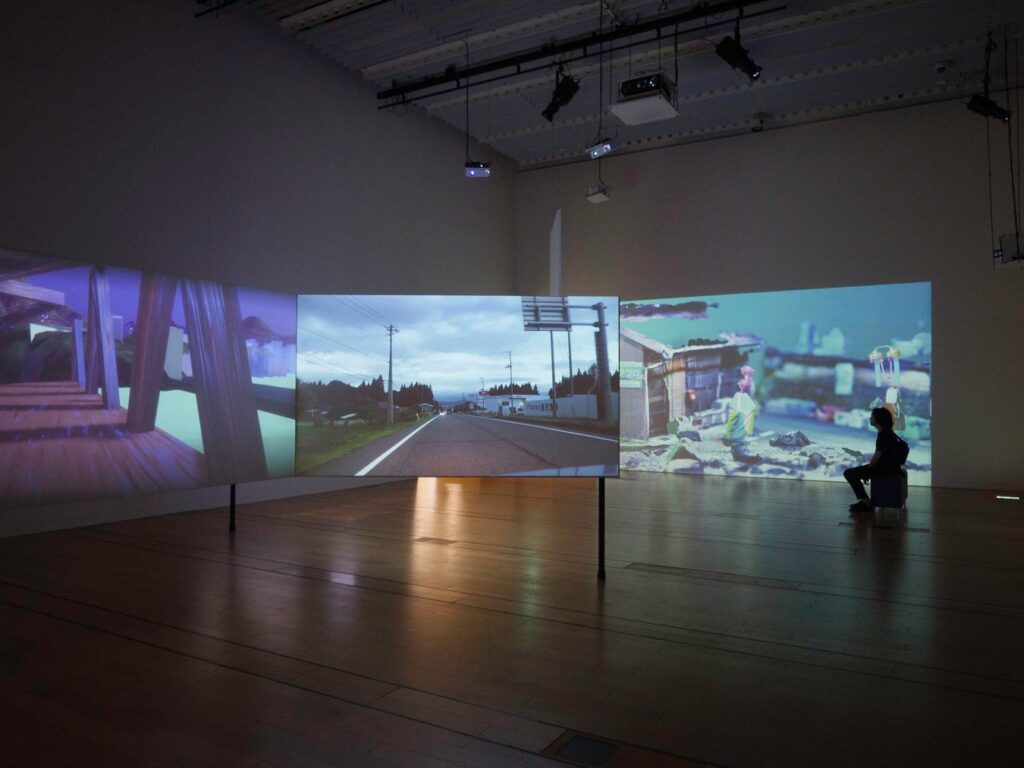 The NTT InterCommunication Center in Shinjuku is a media art gallery featuring exhibitions, workshops, and performances to connect artists and scientists.
The NTT InterCommunication Center in Shinjuku is a media art gallery featuring exhibitions, workshops, and performances to connect artists and scientists. - Ikebukuro: Tokyo’s Urban Hub of Culture and Commerce
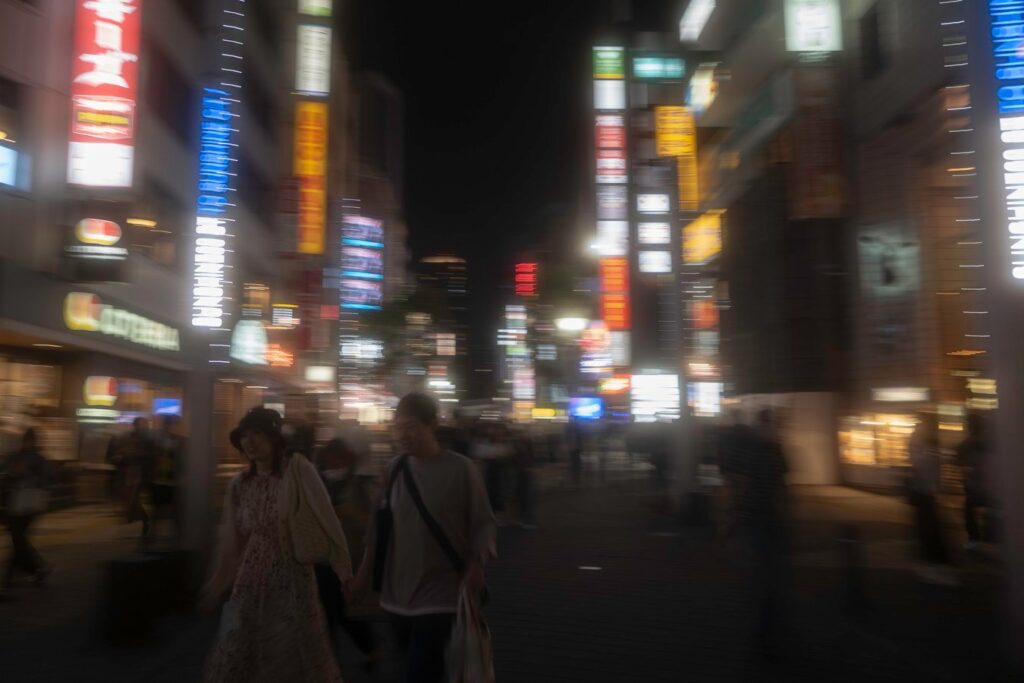 Ikebukuro blends shopping, anime culture, and nature with iconic spots like Sunshine City, Animate Ikebukuro, and Toshima Forest.
Ikebukuro blends shopping, anime culture, and nature with iconic spots like Sunshine City, Animate Ikebukuro, and Toshima Forest. - House Na: A Transparent Vision in Koenji
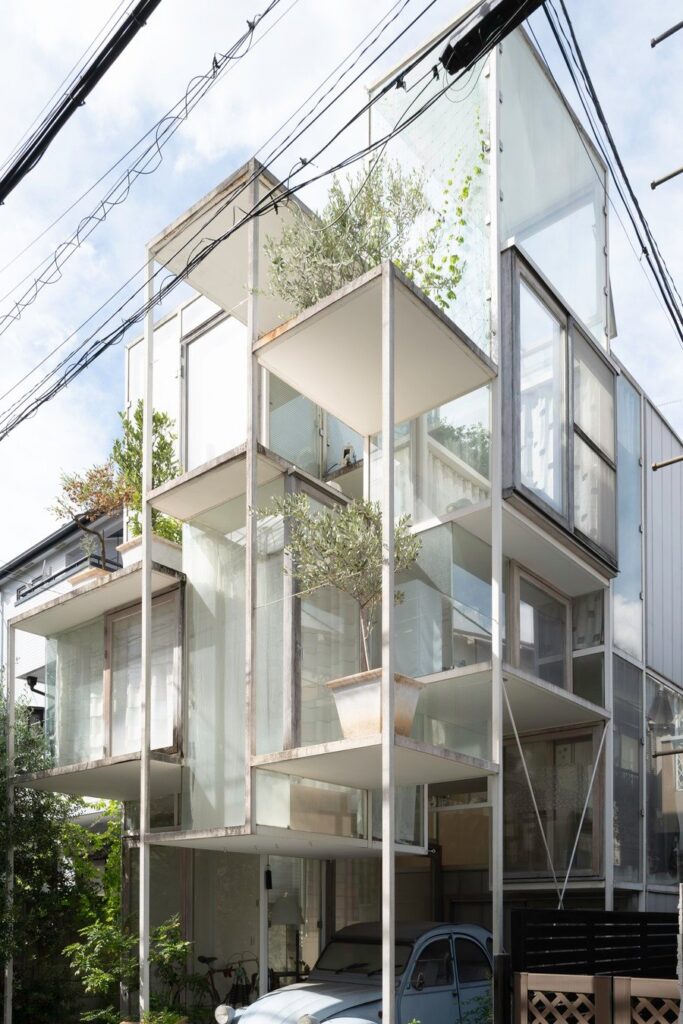 House Na in Koenji, designed by Sou Fujimoto, features transparent walls and staggered platforms, redefining urban living with openness and creativity.
House Na in Koenji, designed by Sou Fujimoto, features transparent walls and staggered platforms, redefining urban living with openness and creativity. - Dorayaki: Japan’s Traditional Sweet Pancake
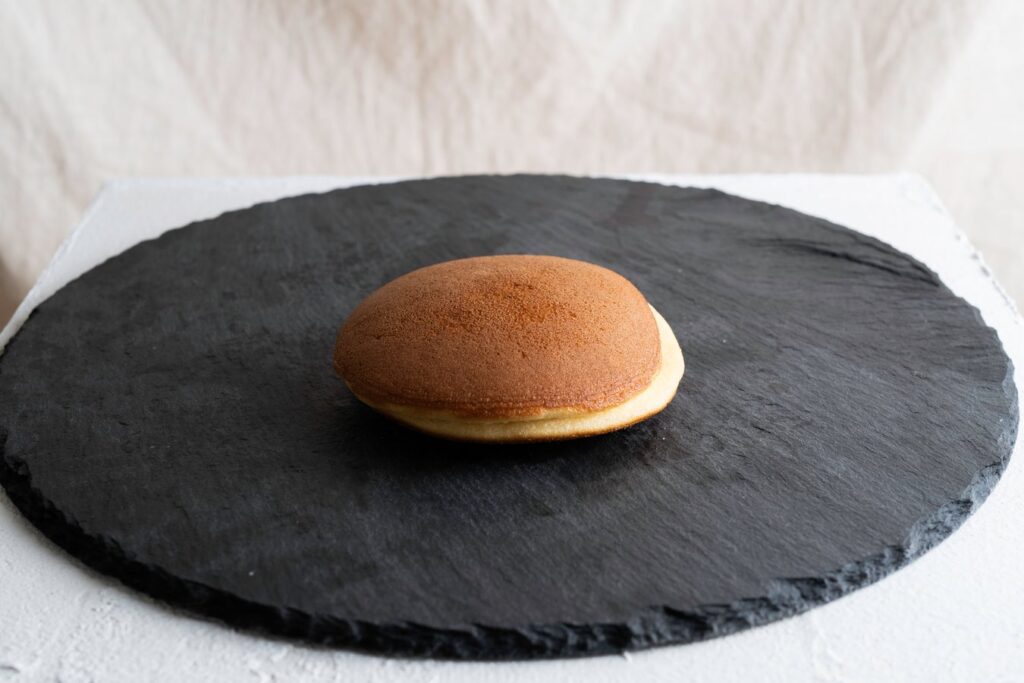 Dorayaki, a traditional Japanese pancake treat, features sweet red bean paste and variations like custard and matcha cream.
Dorayaki, a traditional Japanese pancake treat, features sweet red bean paste and variations like custard and matcha cream. - Bento: A Shinkansen Dining Tradition
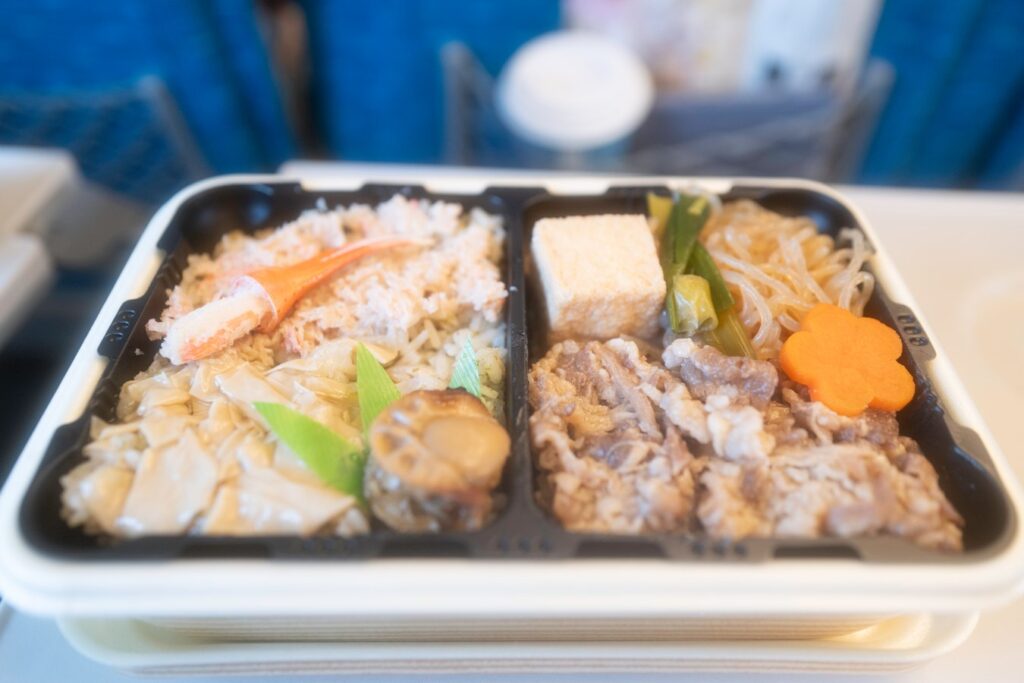 Eating bento on the shinkansen is a Japanese tradition, with station shops offering meals to enjoy onboard.
Eating bento on the shinkansen is a Japanese tradition, with station shops offering meals to enjoy onboard. - Koenji Awa Odori: Tokyo’s Summer Dance Festival
 Koenji Awa Odori is a vibrant summer festival in Tokyo featuring traditional Awaodori dance, music, and cultural exchange.
Koenji Awa Odori is a vibrant summer festival in Tokyo featuring traditional Awaodori dance, music, and cultural exchange. - Tanuki: Japan’s Mythical Raccoon Dog
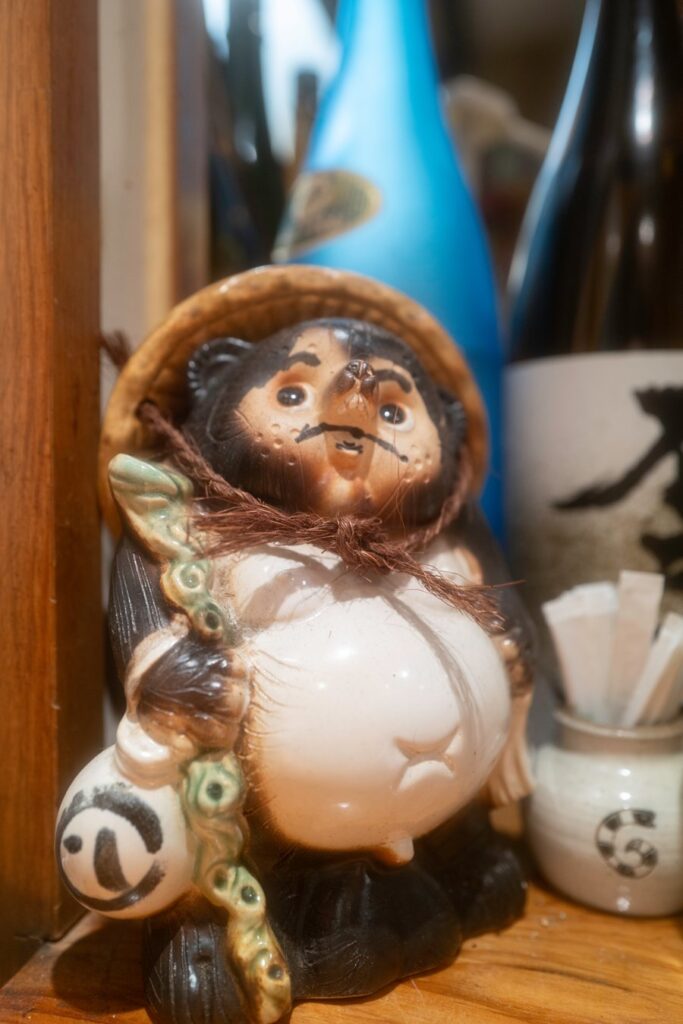 Tanuki, or raccoon dogs, are mythical creatures in Japanese folklore known for shapeshifting, playfulness, and symbols of good luck.
Tanuki, or raccoon dogs, are mythical creatures in Japanese folklore known for shapeshifting, playfulness, and symbols of good luck. - Cat Street: Harajuku’s Fashion Alley
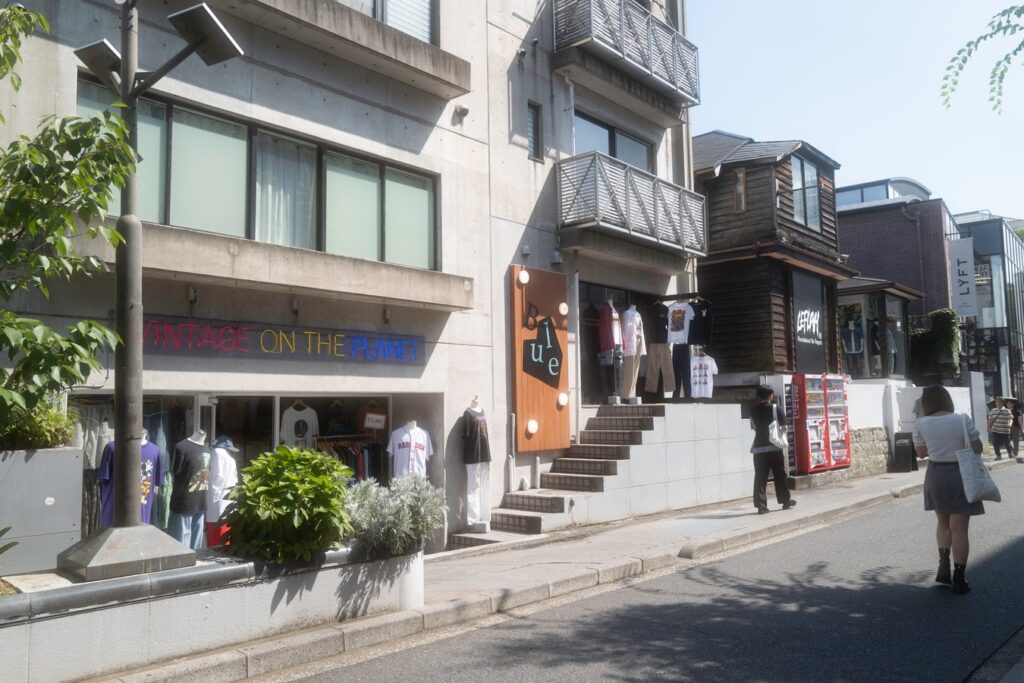 Cat Street in Harajuku offers a relaxed shopping experience with a mix of boutiques, cafes, and fashion reflecting Tokyo’s youth culture.
Cat Street in Harajuku offers a relaxed shopping experience with a mix of boutiques, cafes, and fashion reflecting Tokyo’s youth culture. - Taiyaki: Japan’s Fish-Shaped Street Food
 Taiyaki is a fish-shaped Japanese cake filled with red bean paste, custard, or other sweet and savory options, loved as street food.
Taiyaki is a fish-shaped Japanese cake filled with red bean paste, custard, or other sweet and savory options, loved as street food. - Shimokitazawa: Vintage Finds and Artistic Vibes
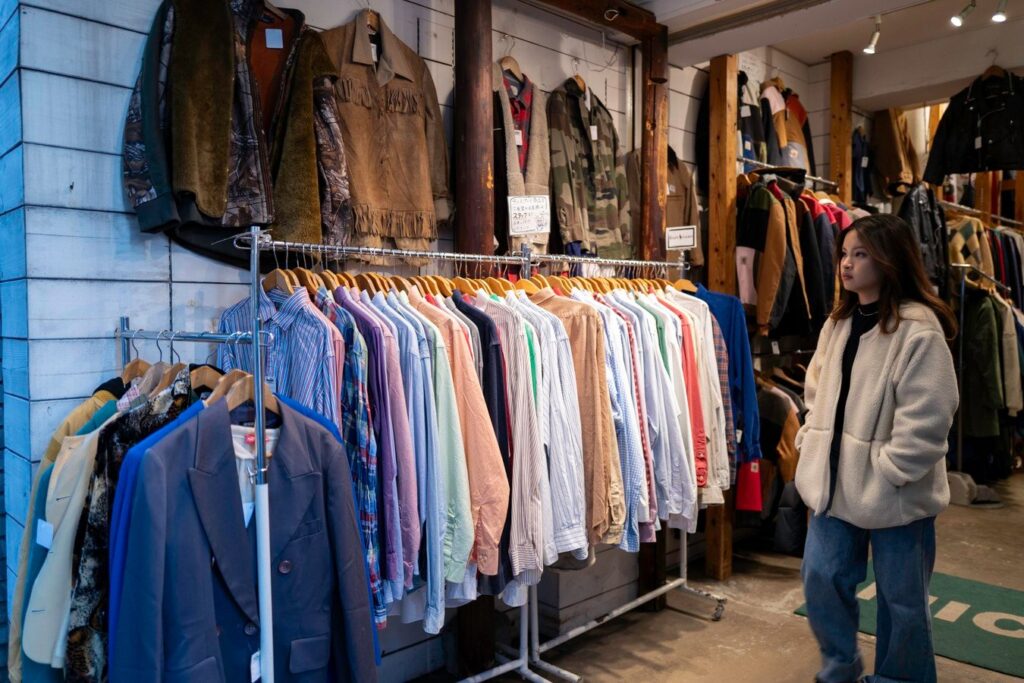 Shimokitazawa offers vintage shopping, vibrant cafes, and a thriving music and theater scene in a laid-back atmosphere.
Shimokitazawa offers vintage shopping, vibrant cafes, and a thriving music and theater scene in a laid-back atmosphere. - Love Hotels in Japan: Privacy and Unique Stays
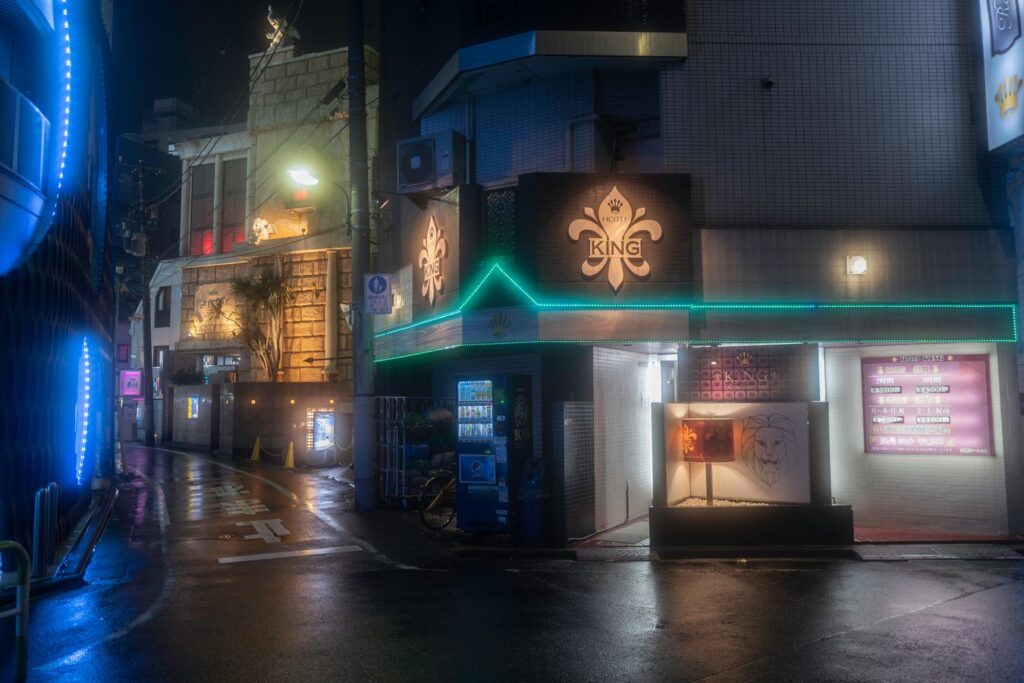 Love hotels in Japan offer private, themed stays, with popular districts in Tokyo’s Ikebukuro and Kabukicho areas.
Love hotels in Japan offer private, themed stays, with popular districts in Tokyo’s Ikebukuro and Kabukicho areas. - Maison Hermès: Renzo Piano’s Architectural Marvel in Ginza
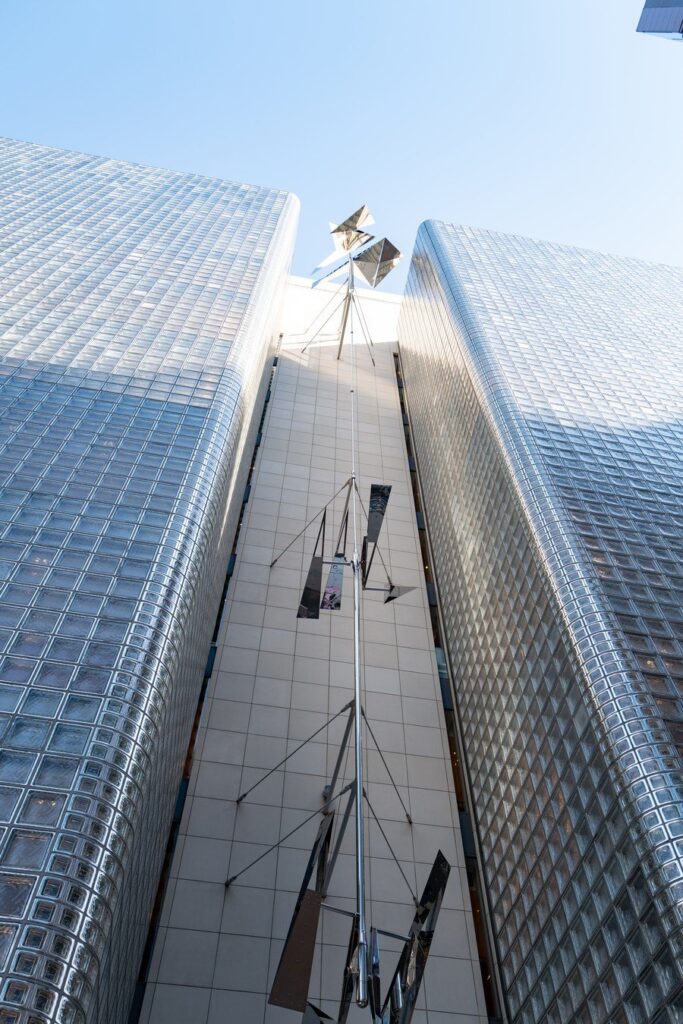 Maison Hermès in Ginza combines Renzo Piano’s architectural innovation with earthquake-resistant design and Japanese aesthetics.
Maison Hermès in Ginza combines Renzo Piano’s architectural innovation with earthquake-resistant design and Japanese aesthetics. - Starbucks Reserve Ginza: Italian Dining Meets Coffee Culture
 Starbucks Reserve Ginza offers an upscale dining experience with an Italian buffet, personalized service, and curated beverages.
Starbucks Reserve Ginza offers an upscale dining experience with an Italian buffet, personalized service, and curated beverages. - Kibori Kuma: Hokkaido’s Wooden Bear Craft
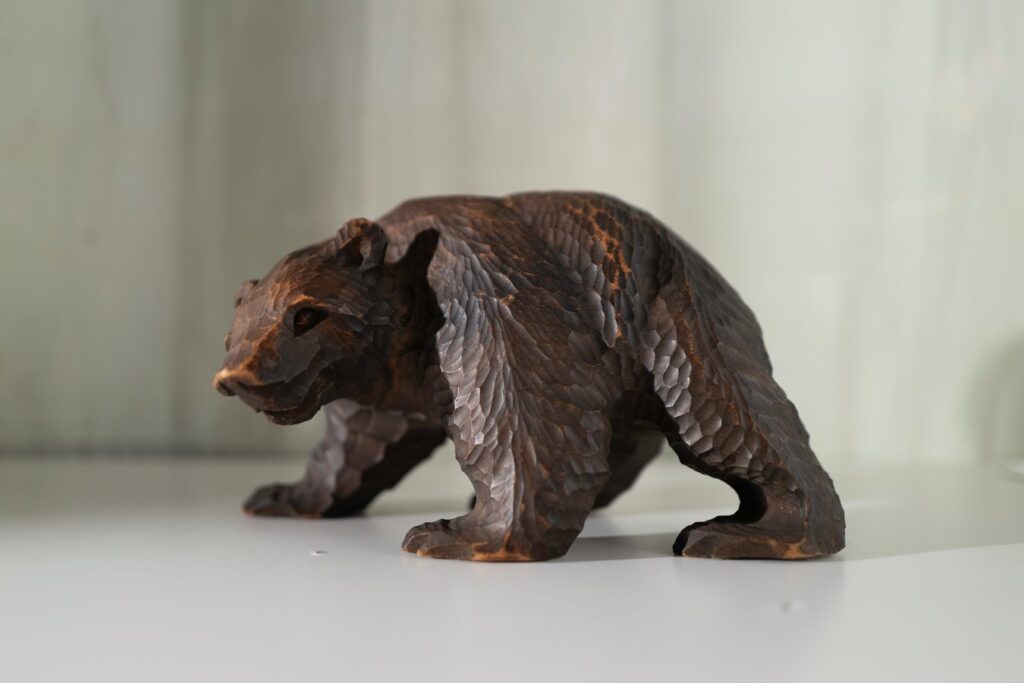 Kibori Kuma, traditional wooden bear carvings from Hokkaido, showcase Japanese craftsmanship and serve as iconic souvenirs.
Kibori Kuma, traditional wooden bear carvings from Hokkaido, showcase Japanese craftsmanship and serve as iconic souvenirs. - Purikura: Japan’s Iconic Photo Booth Experience
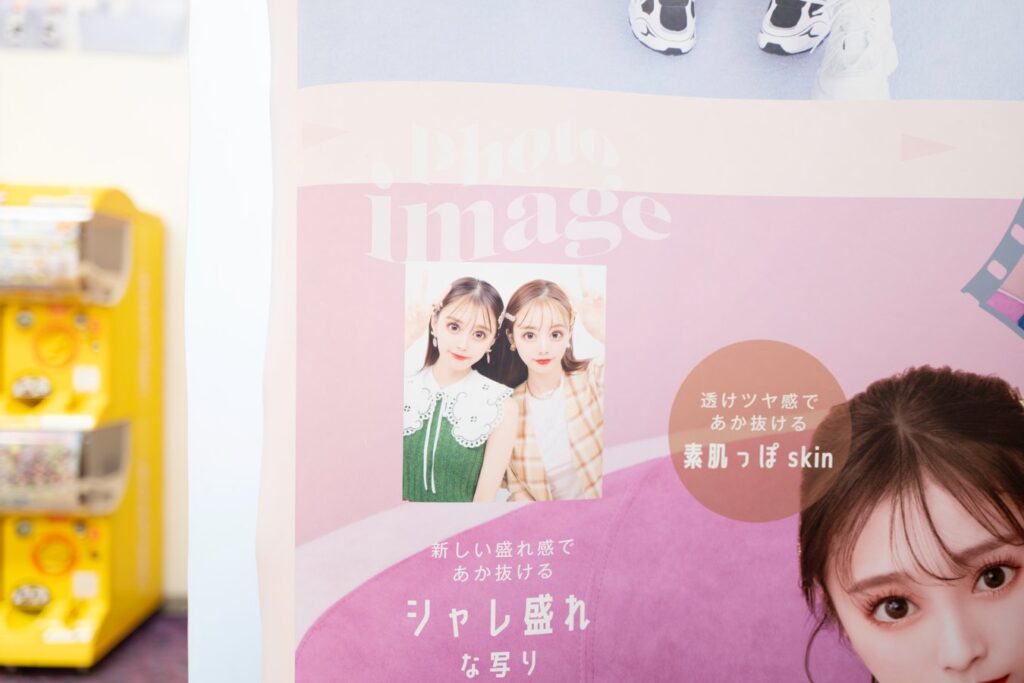 Purikura, Japan’s famous photo booths, offer a fun and customizable way to capture memories with wallet-sized keepsakes.
Purikura, Japan’s famous photo booths, offer a fun and customizable way to capture memories with wallet-sized keepsakes. - Tokyu Kabukicho Tower: Shinjuku’s Entertainment Hub
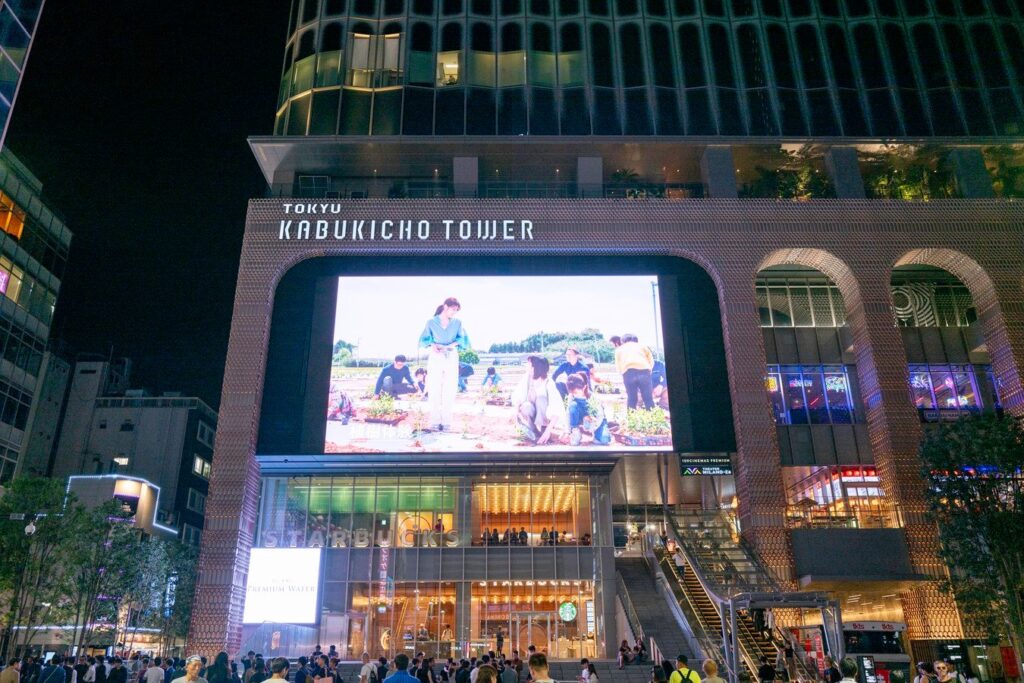 Tokyu Kabukicho Tower in Shinjuku offers entertainment, dining, gaming, and live shows within a 48-floor complex.
Tokyu Kabukicho Tower in Shinjuku offers entertainment, dining, gaming, and live shows within a 48-floor complex. - Shibuya Scramble Crossing: Tokyo’s Iconic Intersection
 Shibuya Scramble Crossing is a vibrant Tokyo landmark, blending culture, history, and modernity in one of the world’s busiest intersections.
Shibuya Scramble Crossing is a vibrant Tokyo landmark, blending culture, history, and modernity in one of the world’s busiest intersections. - Aoyama: Tokyo’s Luxurious Cultural Hub
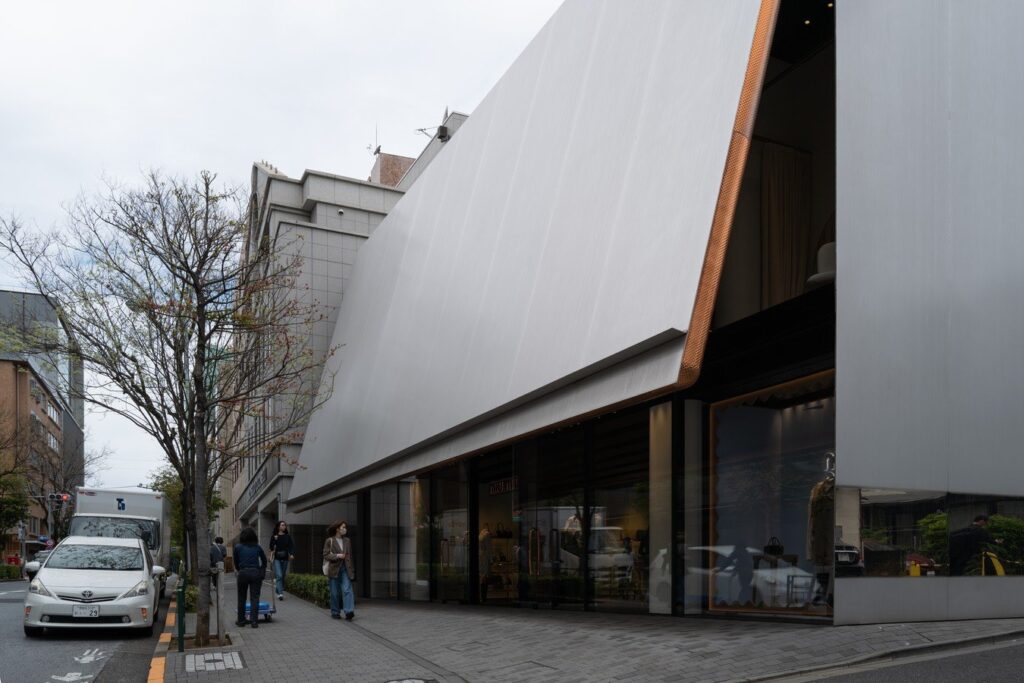 Aoyama offers luxury shopping, cultural landmarks like Nezu Museum and Aoyama Cemetery, and exquisite dining experiences.
Aoyama offers luxury shopping, cultural landmarks like Nezu Museum and Aoyama Cemetery, and exquisite dining experiences. - Trunk Hotel: Boutique Stay in Shibuya
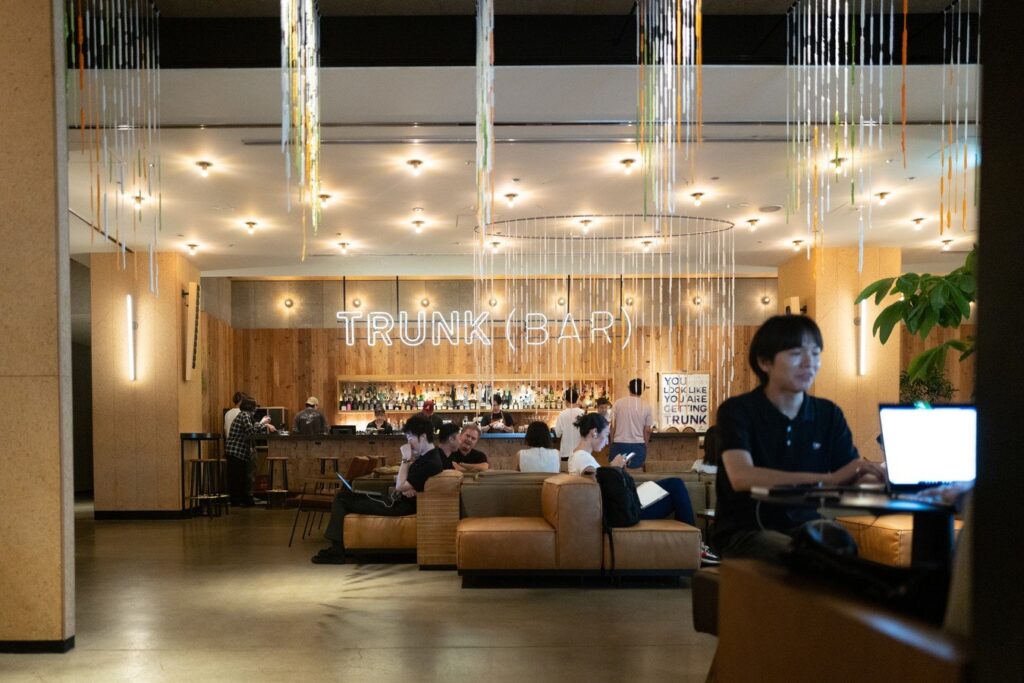 Trunk Hotel in Shibuya combines relaxation and excitement near Yoyogi Park, offering a boutique stay with urban recharge.
Trunk Hotel in Shibuya combines relaxation and excitement near Yoyogi Park, offering a boutique stay with urban recharge. - Kamakura: History and Coastal Charm
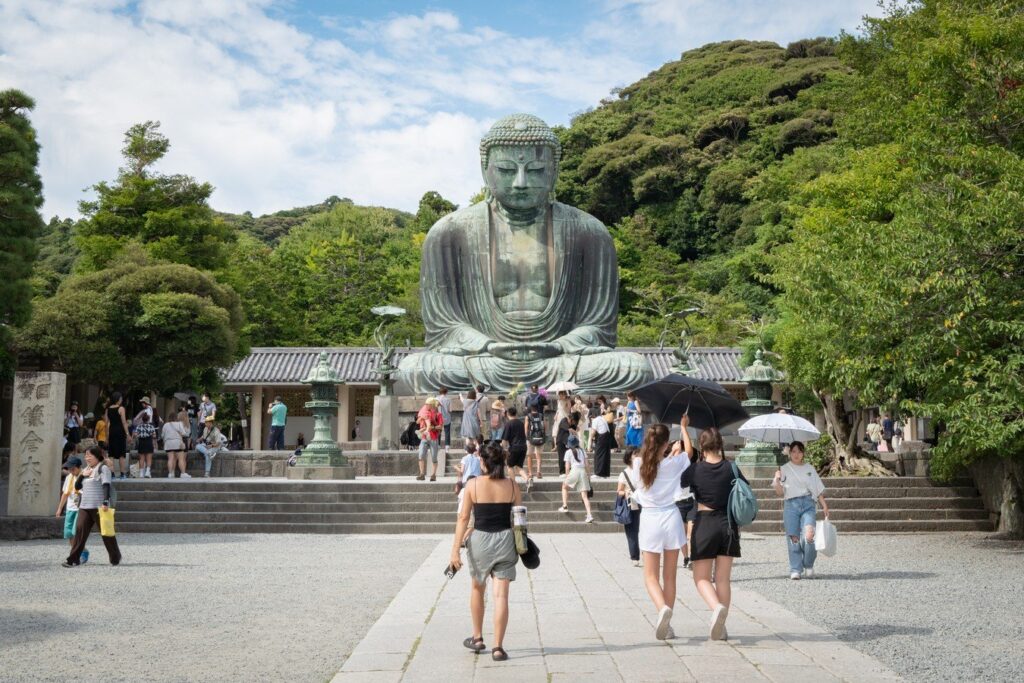 Kamakura, a historic coastal town near Tokyo, offers temples, shrines, beaches, and seasonal gardens like Hokoku-ji.
Kamakura, a historic coastal town near Tokyo, offers temples, shrines, beaches, and seasonal gardens like Hokoku-ji. - Yanaka Cemetery: A Historic Haven in Tokyo
 Yanaka Cemetery in Tokyo combines historical significance, cherry blossom-lined paths, and a tranquil park-like atmosphere.
Yanaka Cemetery in Tokyo combines historical significance, cherry blossom-lined paths, and a tranquil park-like atmosphere. - Shibuya Loft: A Multi-Level Retail Journey
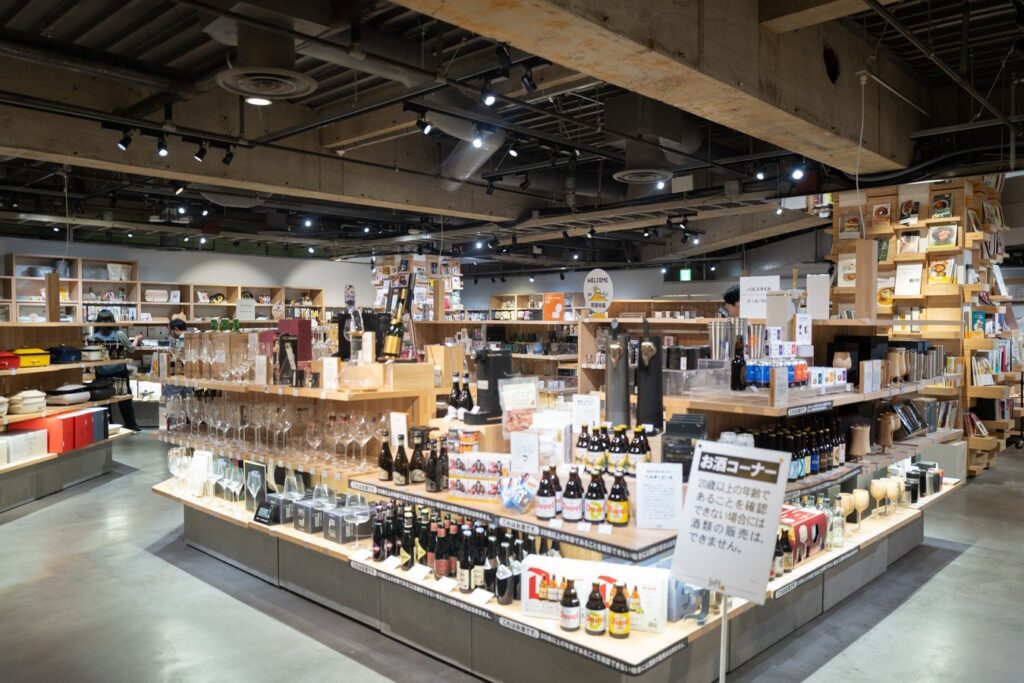 Shibuya Loft offers a seven-story retail experience featuring stationery, cosmetics, design gifts, and Japanese craftsmanship.
Shibuya Loft offers a seven-story retail experience featuring stationery, cosmetics, design gifts, and Japanese craftsmanship. - Ryoan-ji: Kyoto’s Zen Rock Garden
 Ryoan-ji in Kyoto features Japan’s iconic Zen rock garden with mysterious rock formations and tranquil surroundings.
Ryoan-ji in Kyoto features Japan’s iconic Zen rock garden with mysterious rock formations and tranquil surroundings. - Laforet Harajuku: Fashion Hub in Tokyo
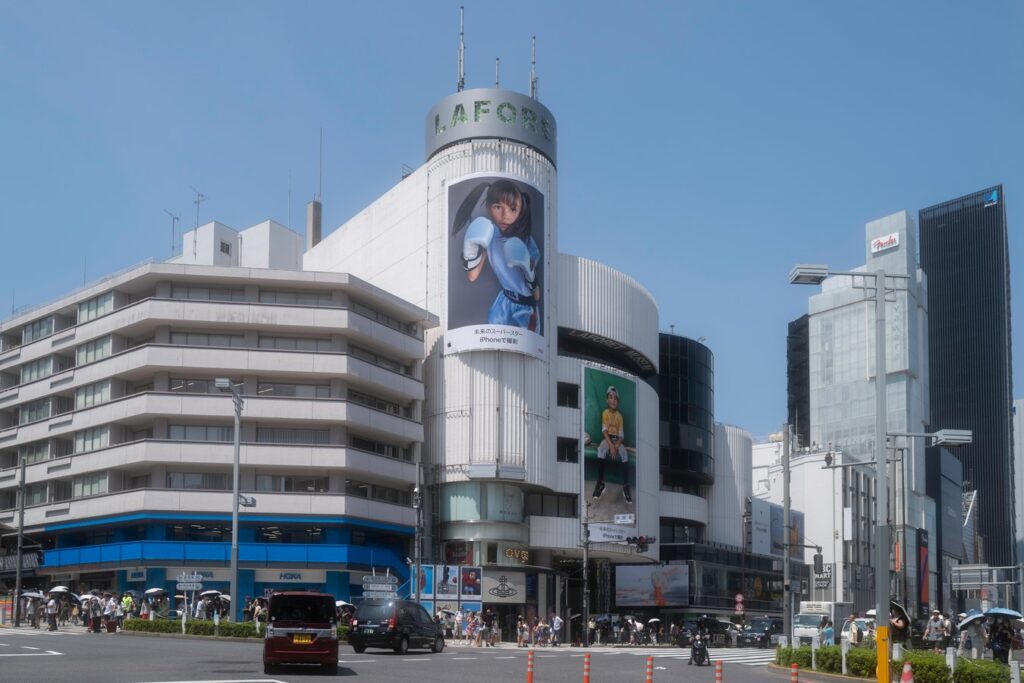 Laforet Harajuku offers over 140 shops, youth fashion, dining, and modern art, making it a central spot in Tokyo’s Harajuku district.
Laforet Harajuku offers over 140 shops, youth fashion, dining, and modern art, making it a central spot in Tokyo’s Harajuku district. - Yakiniku: Japan’s Grilled Meat Tradition
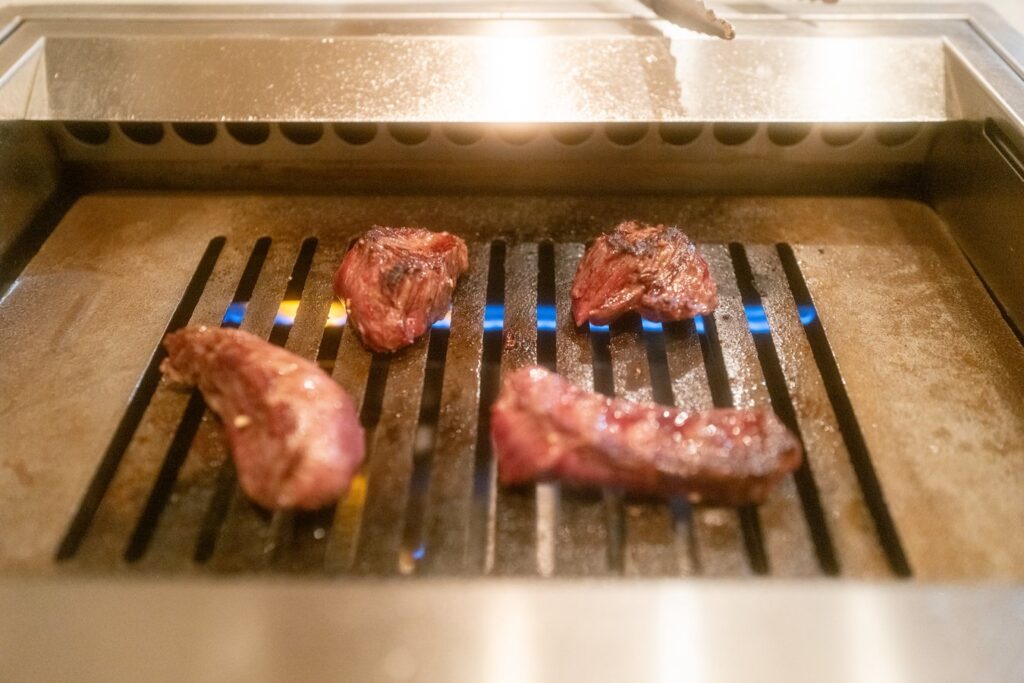 Yakiniku, meaning grilled meat, is a popular Japanese dish inspired by Korean barbecue, featuring bite-sized meat and vegetables cooked over charcoal or grills.
Yakiniku, meaning grilled meat, is a popular Japanese dish inspired by Korean barbecue, featuring bite-sized meat and vegetables cooked over charcoal or grills. - Axis Design Center: Roppongi’s Creative Space
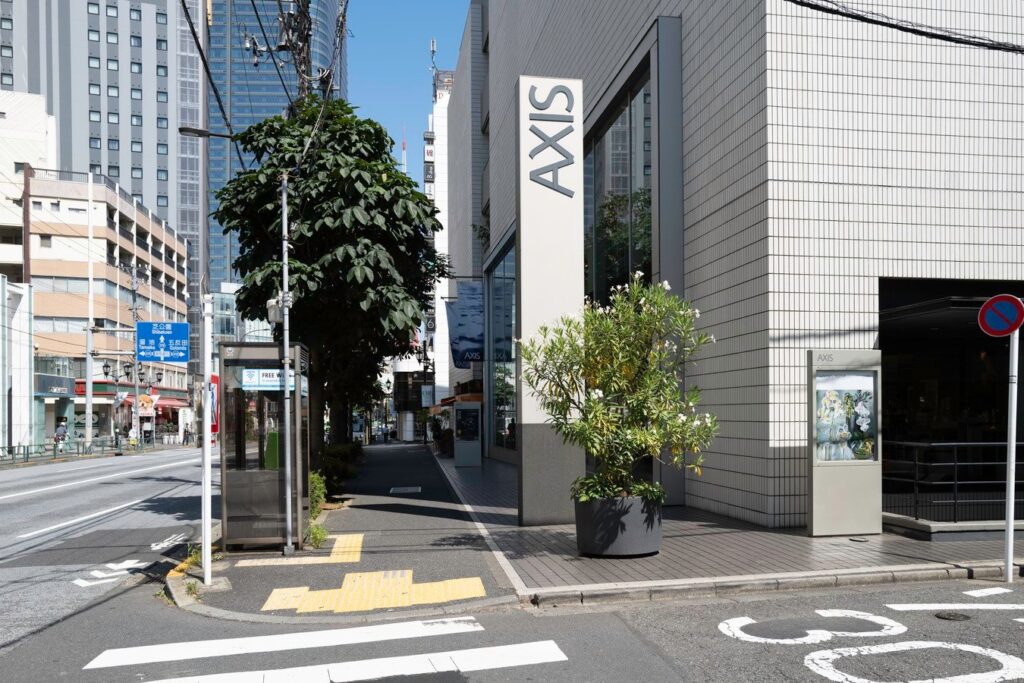 Axis Design Center in Roppongi showcases cutting-edge design and architecture through exhibitions, events, and workshops.
Axis Design Center in Roppongi showcases cutting-edge design and architecture through exhibitions, events, and workshops. - Karaoke Culture in Japan
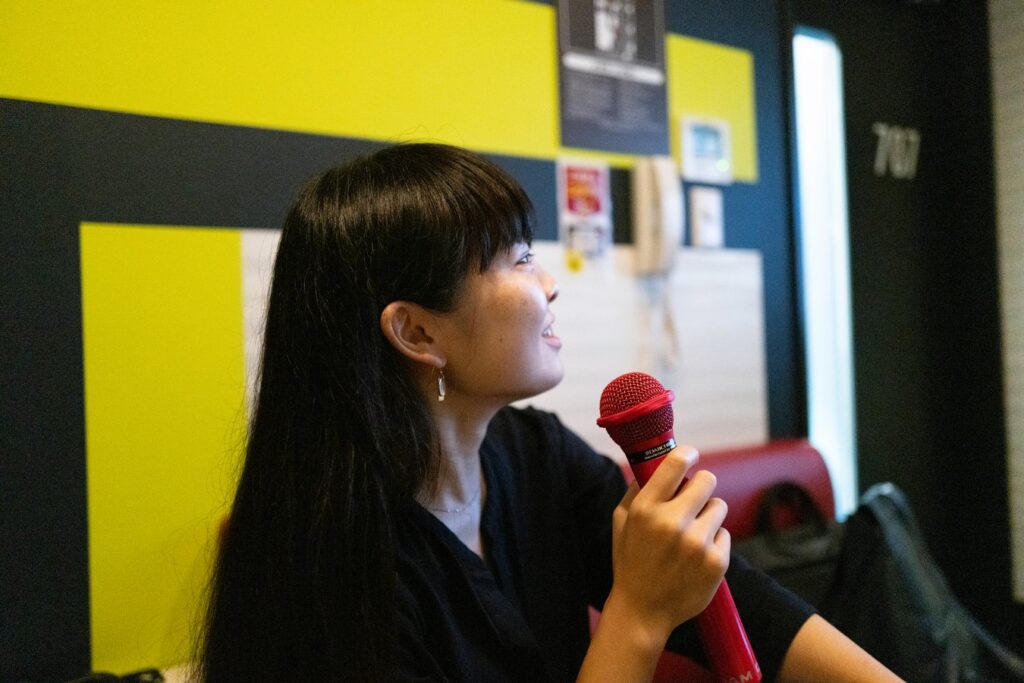 Karaoke in Japan combines music, socializing, and private rooms, offering a fun cultural experience for all.
Karaoke in Japan combines music, socializing, and private rooms, offering a fun cultural experience for all. - Don Quijote: Japan’s Shopping Labyrinth
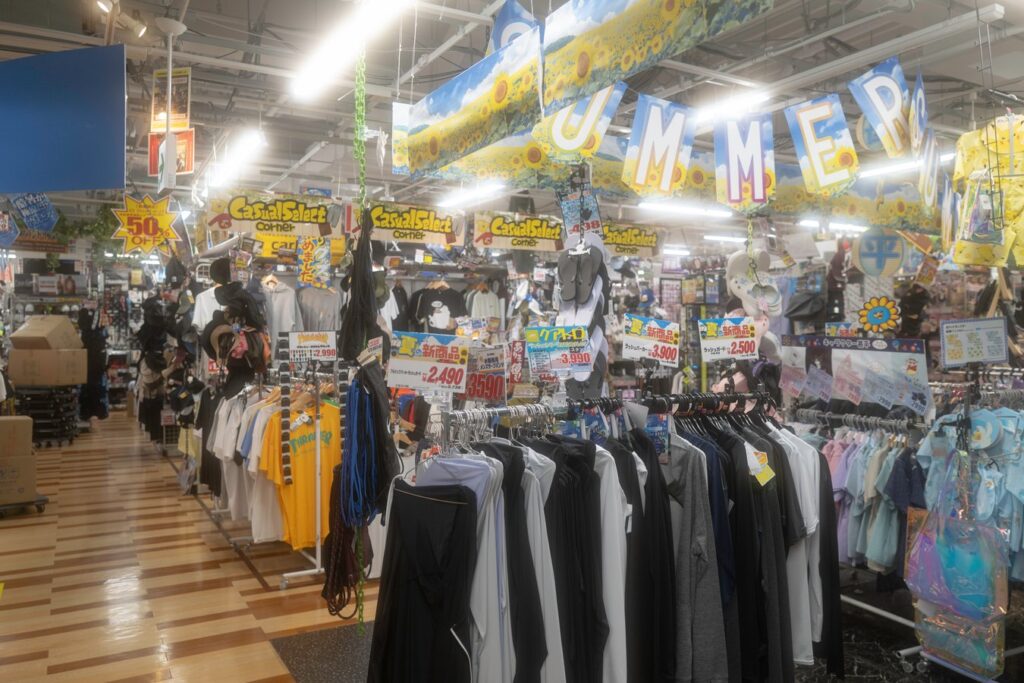 Don Quijote offers a chaotic yet thrilling shopping experience with discounts, eclectic items, and local flavor in each store.
Don Quijote offers a chaotic yet thrilling shopping experience with discounts, eclectic items, and local flavor in each store. - Oedo Antique Market: Japan’s Largest Outdoor Bazaar
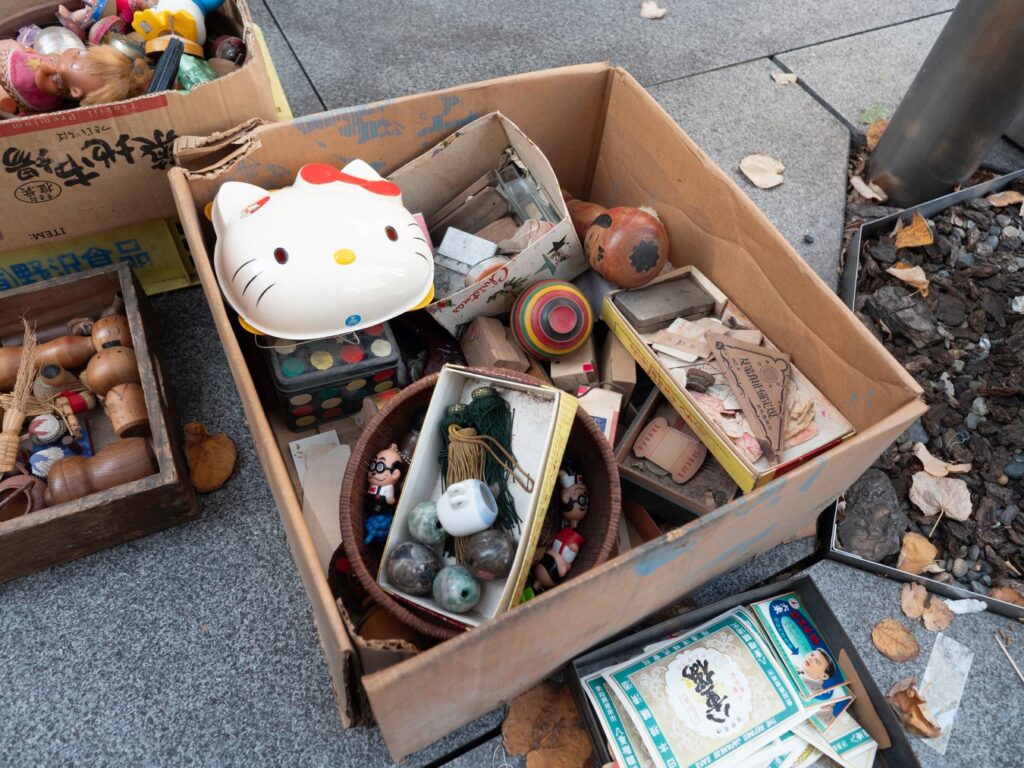 The Oedo Antique Market, Japan’s largest outdoor bazaar, offers 250 shops with antiques like pottery, kimonos, and tableware at the Tokyo International Forum.
The Oedo Antique Market, Japan’s largest outdoor bazaar, offers 250 shops with antiques like pottery, kimonos, and tableware at the Tokyo International Forum. - Seiko Museum Ginza: Japan’s Timekeeping Legacy
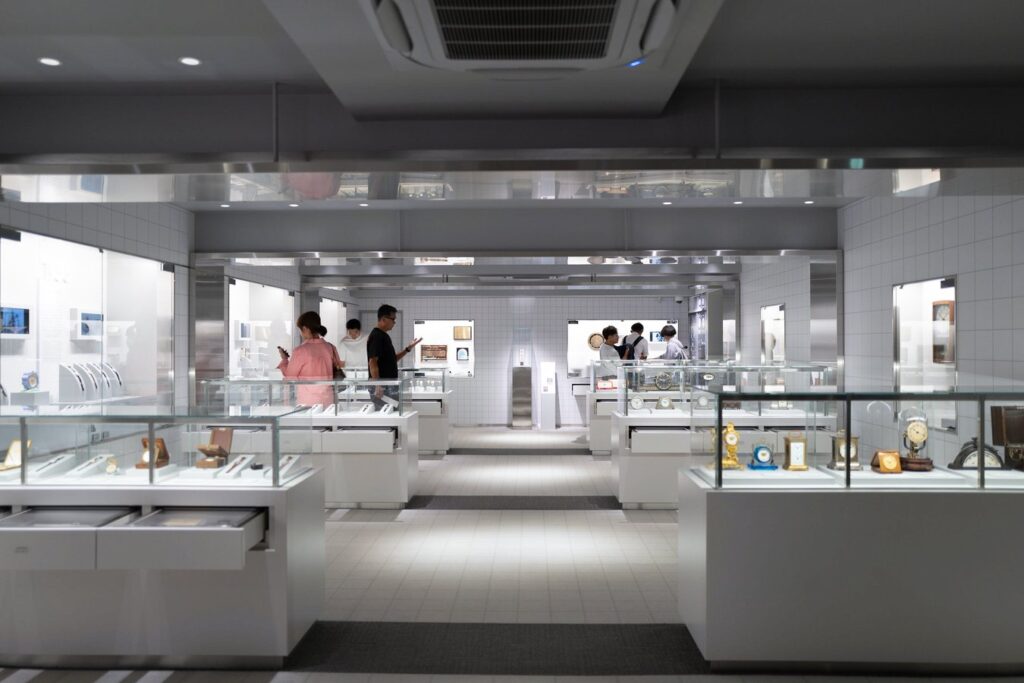 The Seiko Museum Ginza in Tokyo showcases Japan’s clockmaking history through exhibits of historical timepieces, including Japanese temporal clocks.
The Seiko Museum Ginza in Tokyo showcases Japan’s clockmaking history through exhibits of historical timepieces, including Japanese temporal clocks. - Nakameguro: Riverside Cafes and Cherry Blossoms
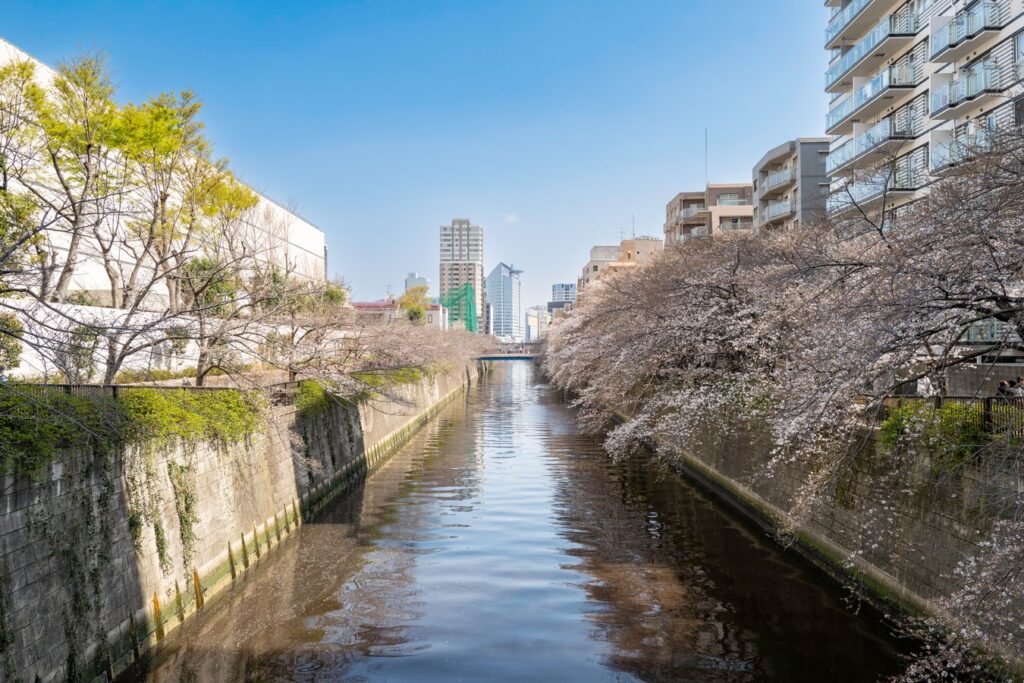 Nakameguro combines riverside cherry blossoms, trendy cafes, and the iconic Starbucks Reserve® Roastery Tokyo.
Nakameguro combines riverside cherry blossoms, trendy cafes, and the iconic Starbucks Reserve® Roastery Tokyo. - Meiji Jingu Museum: Imperial History and Design
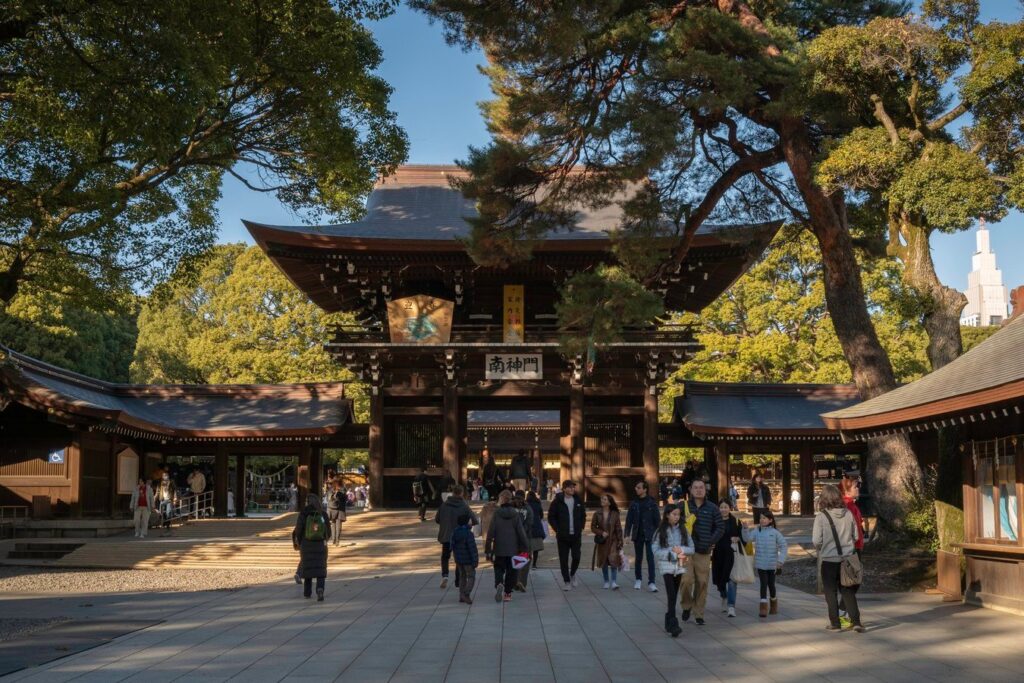 The Meiji Jingu Museum, designed by Kuma Kengo, highlights artifacts from Emperor Meiji and Empress Shoken in a harmonious architectural setting.
The Meiji Jingu Museum, designed by Kuma Kengo, highlights artifacts from Emperor Meiji and Empress Shoken in a harmonious architectural setting. - Yakisoba: Japan’s Iconic Stir-Fried Noodles
 Yakisoba is a stir-fried noodle dish with savory sauce, popular at festivals and izakayas, offering regional and creative variations.
Yakisoba is a stir-fried noodle dish with savory sauce, popular at festivals and izakayas, offering regional and creative variations. - Omiya Bonsai Art Museum: Saitama’s Living Art
 The Omiya Bonsai Art Museum in Saitama showcases over 120 bonsai masterpieces, artifacts, and seasonal exhibitions, offering a serene glimpse into this living art form.
The Omiya Bonsai Art Museum in Saitama showcases over 120 bonsai masterpieces, artifacts, and seasonal exhibitions, offering a serene glimpse into this living art form. - Golden Gai: Shinjuku’s Nostalgic Nightlife
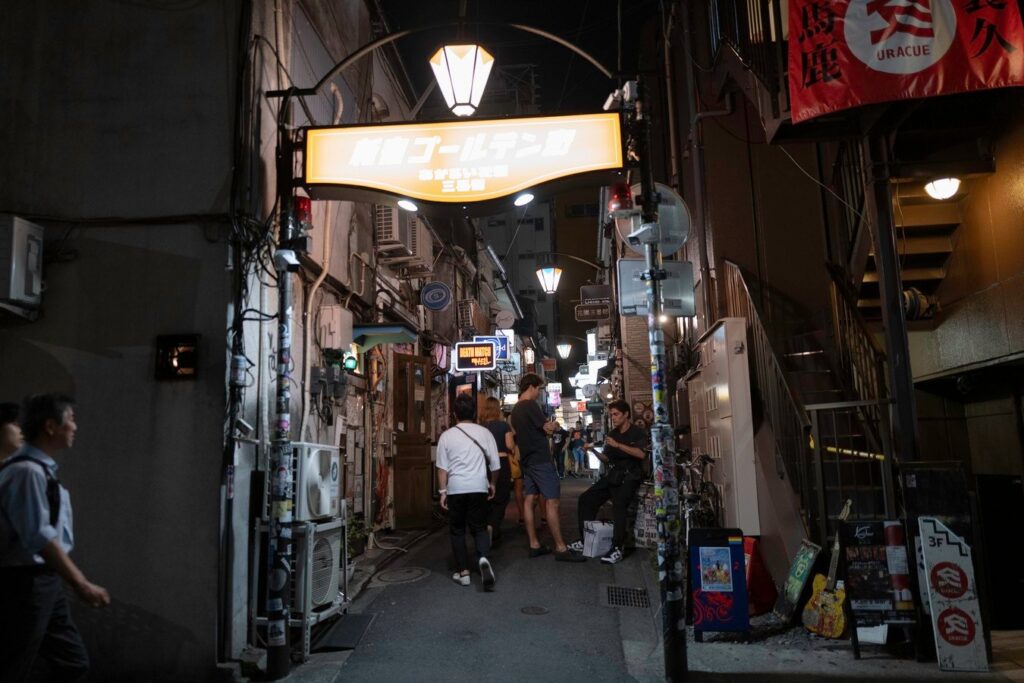 Golden Gai in Shinjuku offers narrow alleys, historic bars, and a nostalgic glimpse into Tokyo’s post-war nightlife culture.
Golden Gai in Shinjuku offers narrow alleys, historic bars, and a nostalgic glimpse into Tokyo’s post-war nightlife culture. - Yayoi Kusama Museum: A Tribute to a Visionary
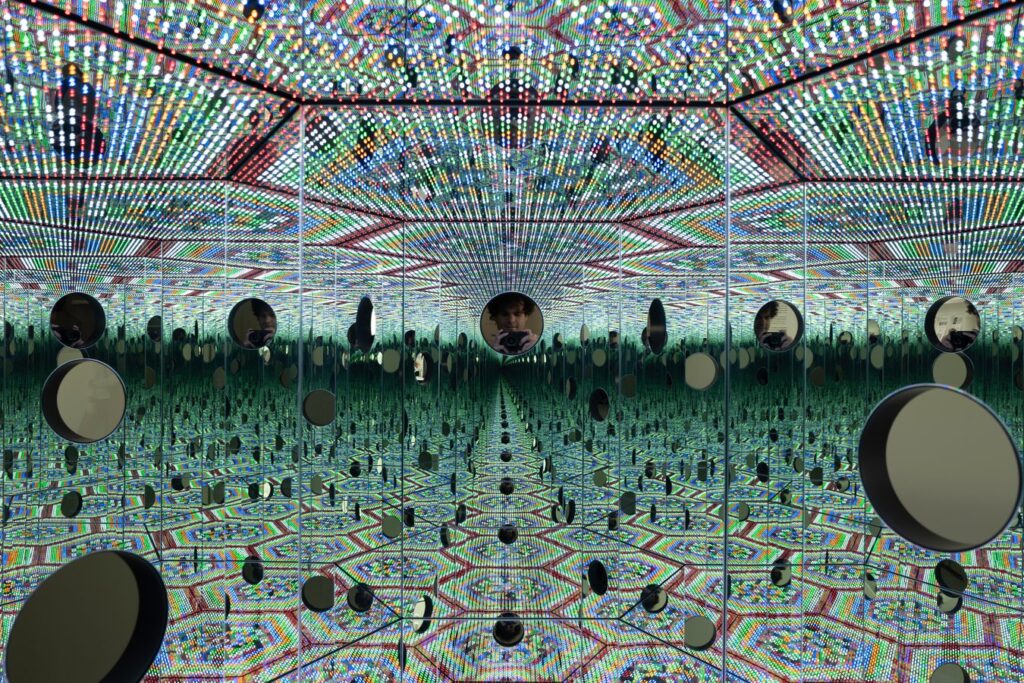 The Yayoi Kusama Museum in Shinjuku showcases the artist’s iconic works, including Infinity Mirror Rooms and sculptures, in an intimate, timed-ticket setting.
The Yayoi Kusama Museum in Shinjuku showcases the artist’s iconic works, including Infinity Mirror Rooms and sculptures, in an intimate, timed-ticket setting. - Katsura Imperial Villa: A Timeless Architectural Marvel
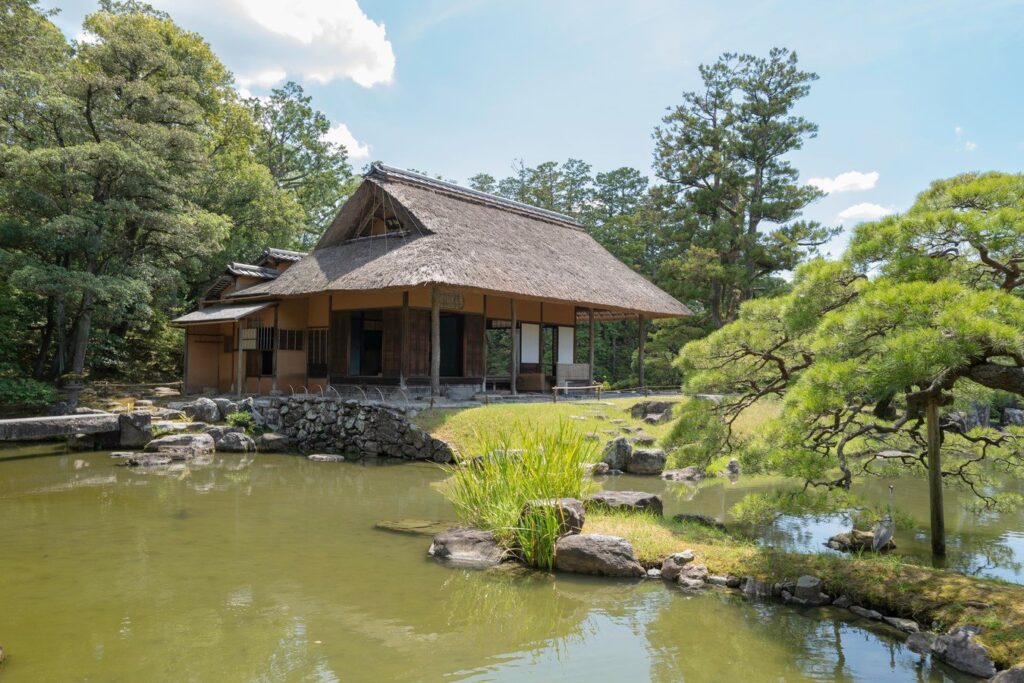 Katsura Imperial Villa, built for the imperial family in the 17th century, showcases Japanese architecture, teahouses, and serene gardens.
Katsura Imperial Villa, built for the imperial family in the 17th century, showcases Japanese architecture, teahouses, and serene gardens. - Biei: Hokkaido’s Scenic Canvas
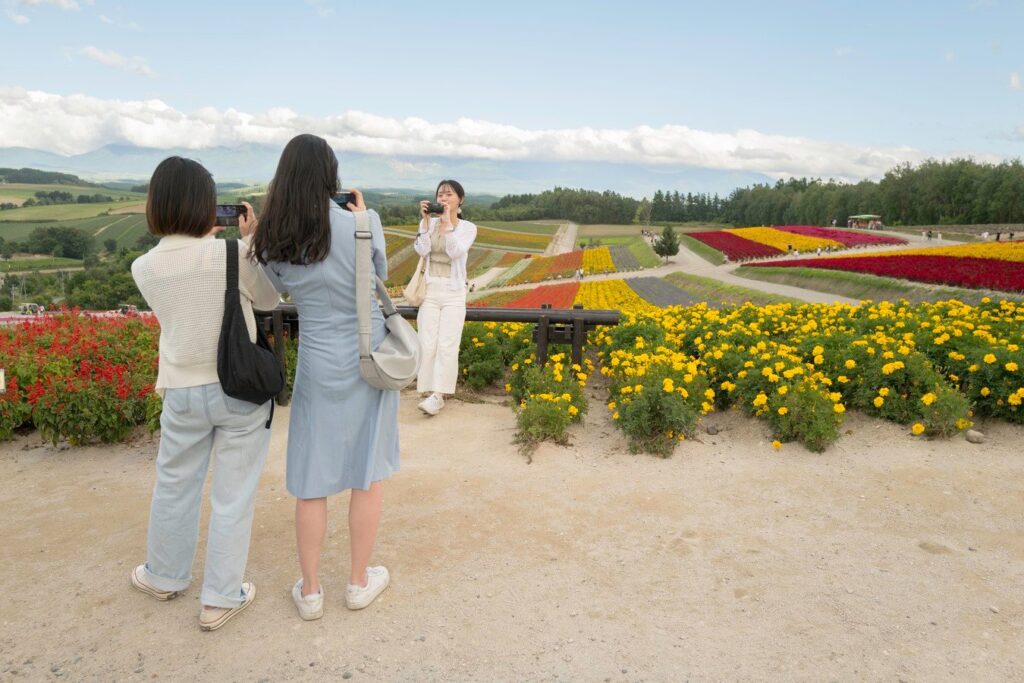 Biei, Hokkaido, features the Blue Pond, colorful flower fields, and year-round activities, making it a scenic treasure for visitors.
Biei, Hokkaido, features the Blue Pond, colorful flower fields, and year-round activities, making it a scenic treasure for visitors. - The Essence of Yakiniku: Japanese Barbecue
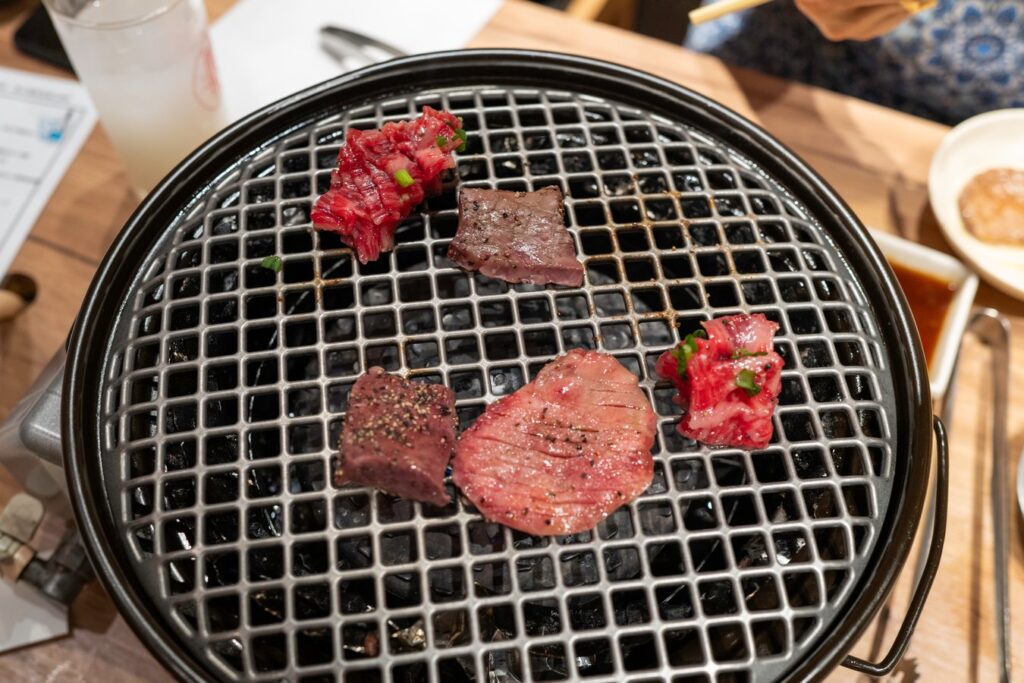 Yakiniku, Japan’s barbecue tradition, features grilled meats, interactive dining, and premium cuts like wagyu.
Yakiniku, Japan’s barbecue tradition, features grilled meats, interactive dining, and premium cuts like wagyu. - Azabudai Hills: Tokyo’s Urban Village
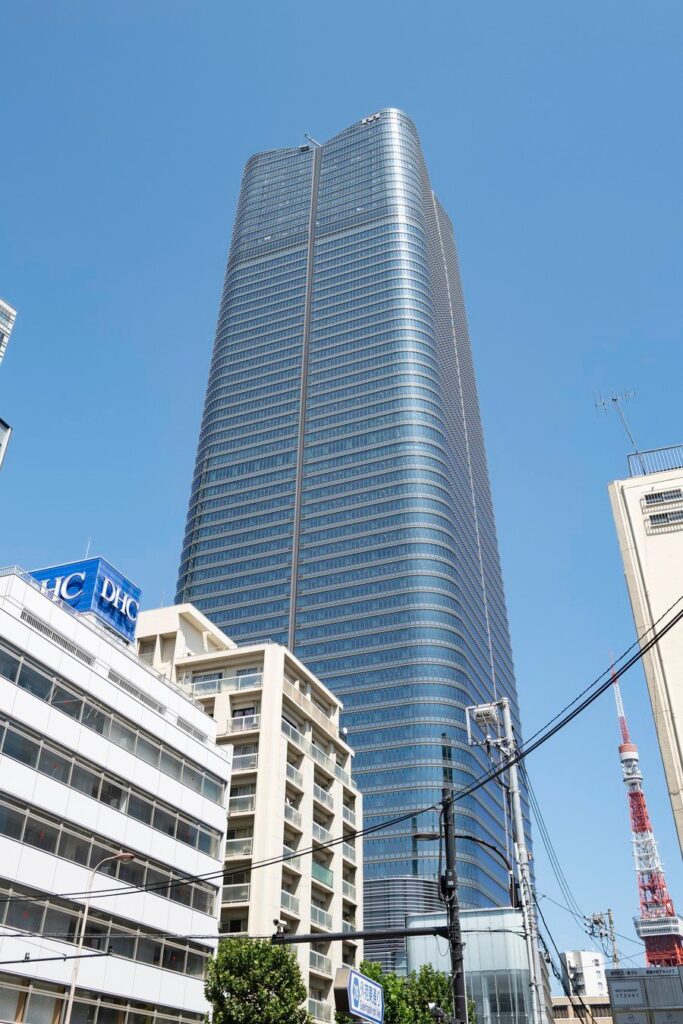 Azabudai Hills in Minato City is a sustainable urban village combining offices, residences, schools, and green spaces in Tokyo.
Azabudai Hills in Minato City is a sustainable urban village combining offices, residences, schools, and green spaces in Tokyo. - Tsukiji Outer Market: Tokyo’s Food Town
 Tsukiji Outer Market offers traditional Japanese foods, wholesale and retail shops, and ready-to-eat bite-sized delights.
Tsukiji Outer Market offers traditional Japanese foods, wholesale and retail shops, and ready-to-eat bite-sized delights. - Don Quijote: Japan’s Discount Haven
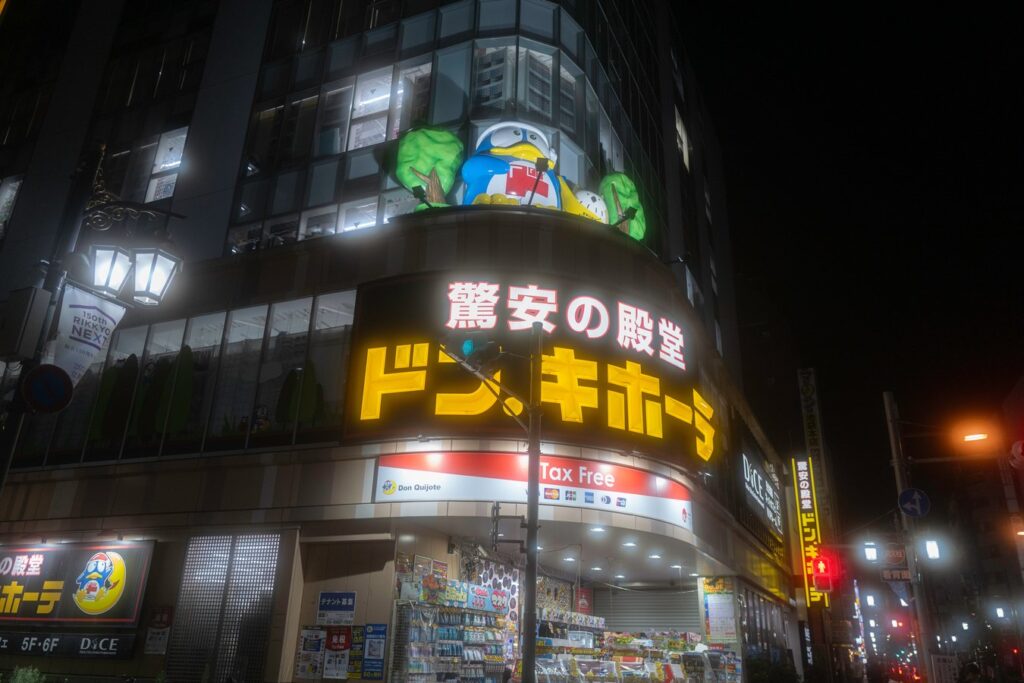 Don Quijote, or Donki, is Japan’s discount store chain offering groceries, electronics, and clothing, with unique merchandising and late hours.
Don Quijote, or Donki, is Japan’s discount store chain offering groceries, electronics, and clothing, with unique merchandising and late hours. - Shiseido Gallery: A Hub for Contemporary Art in Ginza
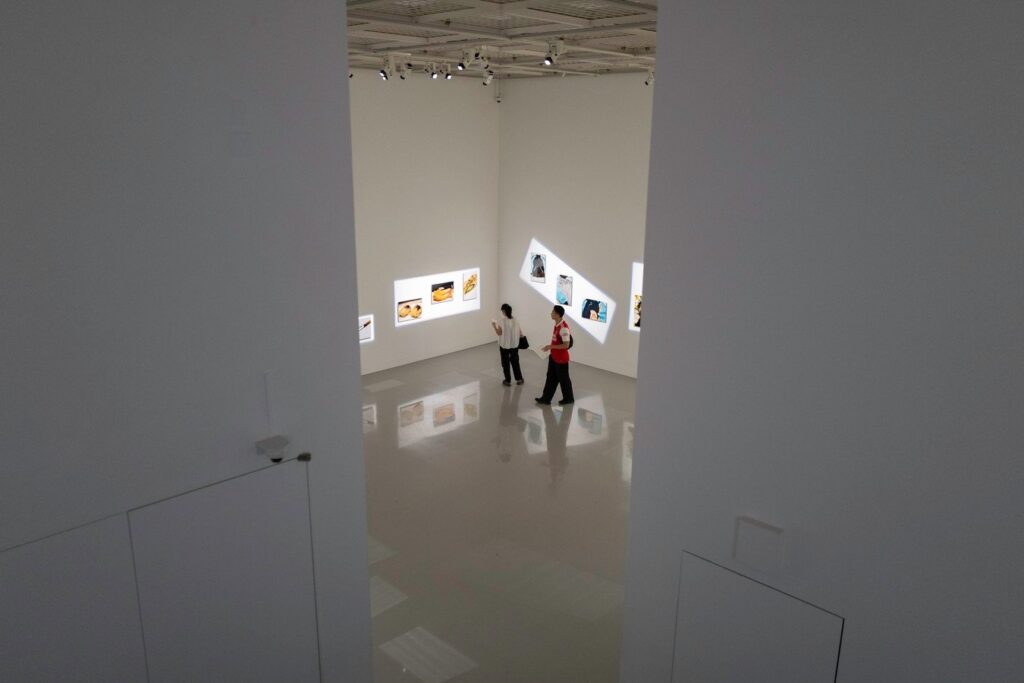 The Shiseido Gallery in Ginza, Japan’s oldest art gallery, hosts free contemporary art exhibits in a striking building designed by Ricardo Bofill.
The Shiseido Gallery in Ginza, Japan’s oldest art gallery, hosts free contemporary art exhibits in a striking building designed by Ricardo Bofill. - Ginza Graphic Gallery: Tokyo’s Design Hub
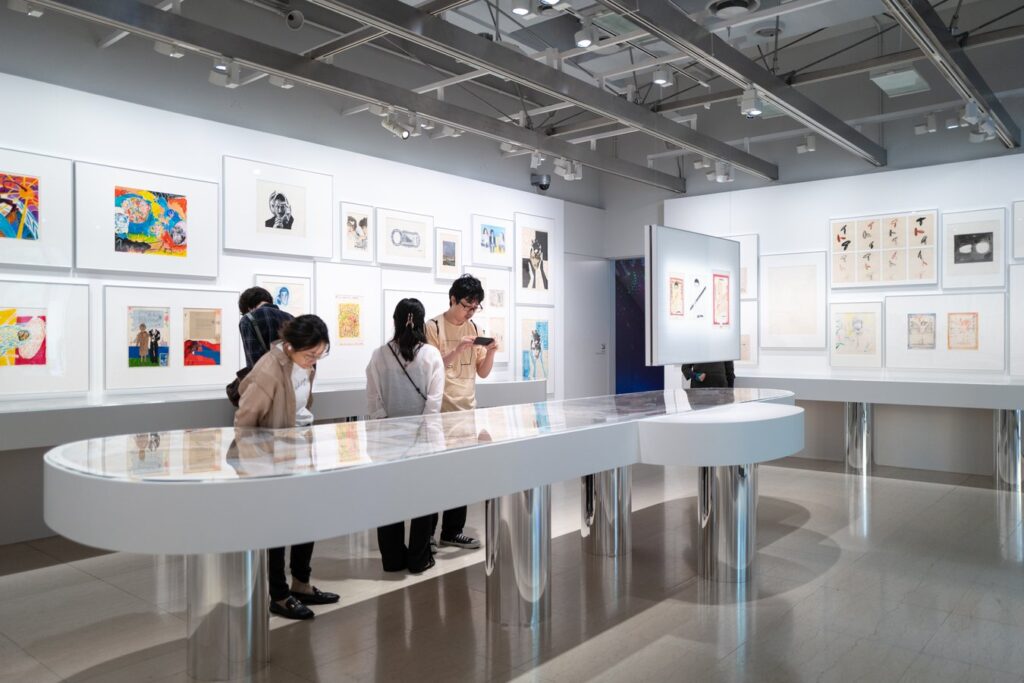 Ginza Graphic Gallery showcases graphic design through exhibitions, lectures, and publications, promoting cultural exchange and inspiring creatives.
Ginza Graphic Gallery showcases graphic design through exhibitions, lectures, and publications, promoting cultural exchange and inspiring creatives. - Spiral: Aoyama’s Cultural and Lifestyle Hub
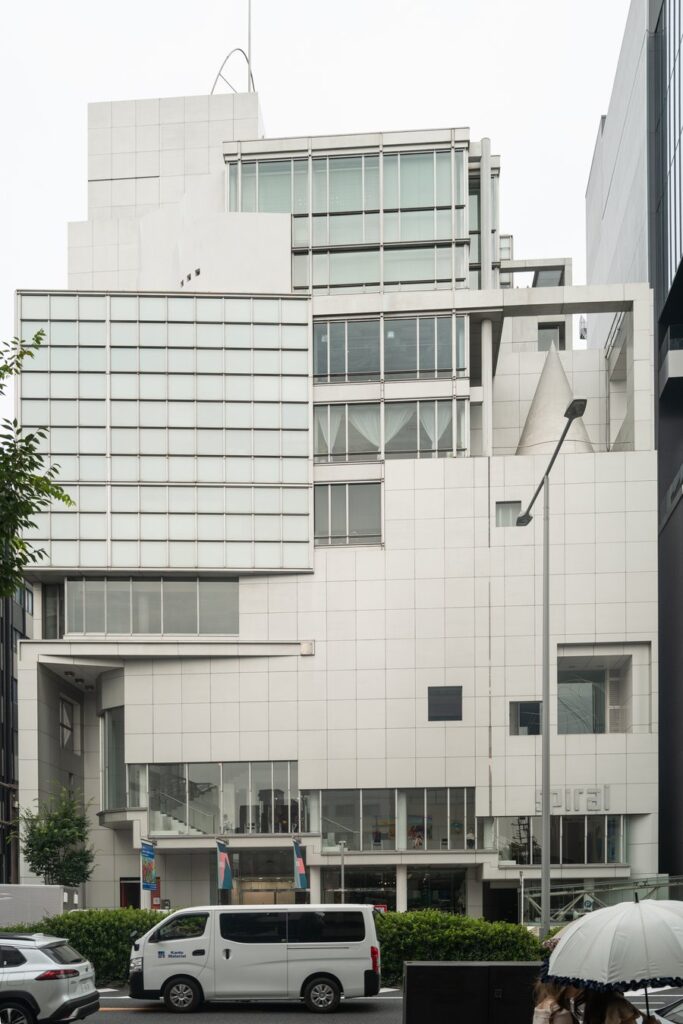 Spiral in Aoyama is a dynamic arts complex blending culture, lifestyle, and commerce through its gallery, café, and design spaces.
Spiral in Aoyama is a dynamic arts complex blending culture, lifestyle, and commerce through its gallery, café, and design spaces. - Miura Peninsula: Beaches, Seafood, and Scenic Adventures
 Miura Peninsula offers beaches, fresh seafood, hiking trails, and scenic cycling routes, all with stunning views of Mt. Fuji.
Miura Peninsula offers beaches, fresh seafood, hiking trails, and scenic cycling routes, all with stunning views of Mt. Fuji. - Miyashita Park: Shibuya’s Urban Oasis
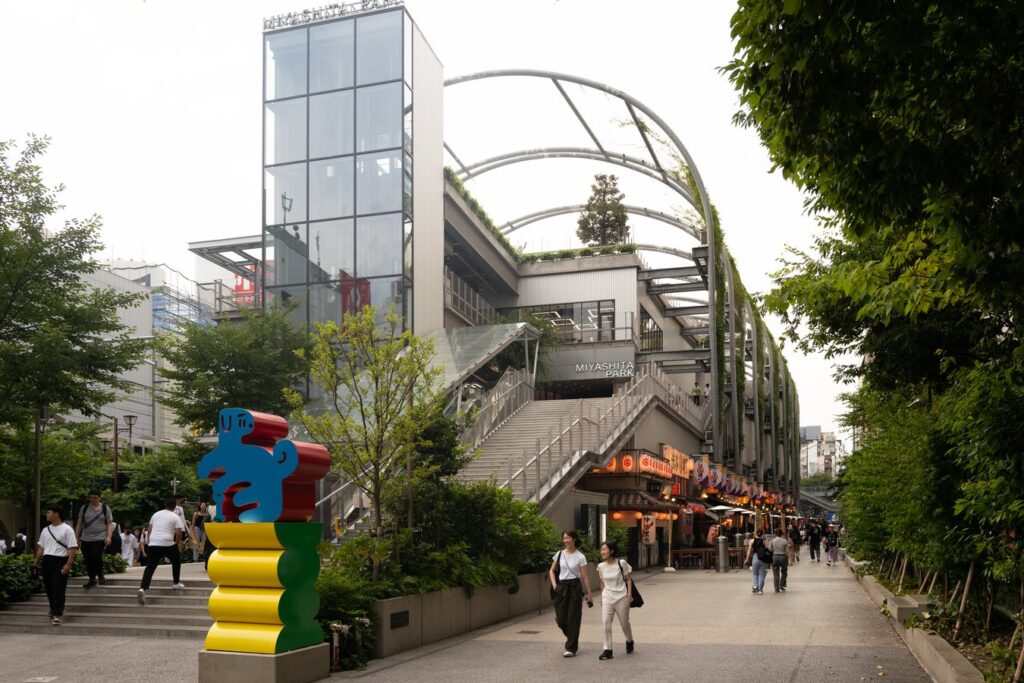 Miyashita Park in Shibuya features a rooftop park, shopping mall, diverse dining options, and sports facilities, blending modernity with nature.
Miyashita Park in Shibuya features a rooftop park, shopping mall, diverse dining options, and sports facilities, blending modernity with nature. - Sapporo’s Soul Food: Soup Curry
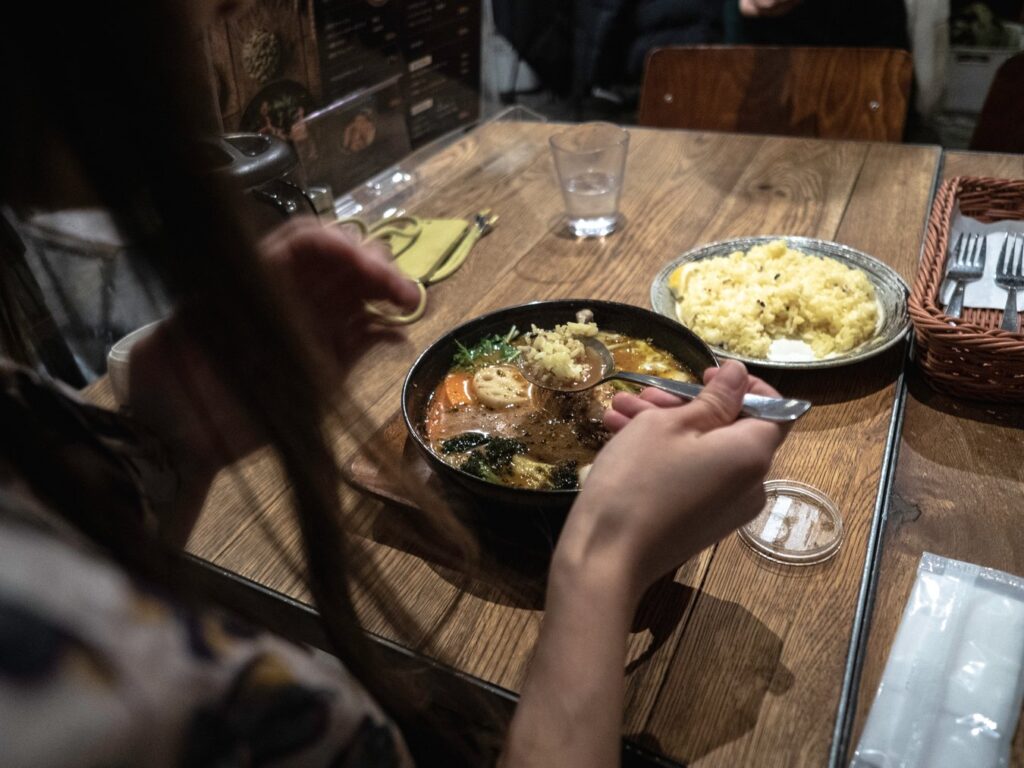 Sapporo’s soup curry is a spicy, customizable dish featuring fresh Hokkaido vegetables and unique soup bases. Discover its charm and top restaurants.
Sapporo’s soup curry is a spicy, customizable dish featuring fresh Hokkaido vegetables and unique soup bases. Discover its charm and top restaurants. - Arashiyama Bamboo Path: Kyoto’s Tranquil Escape
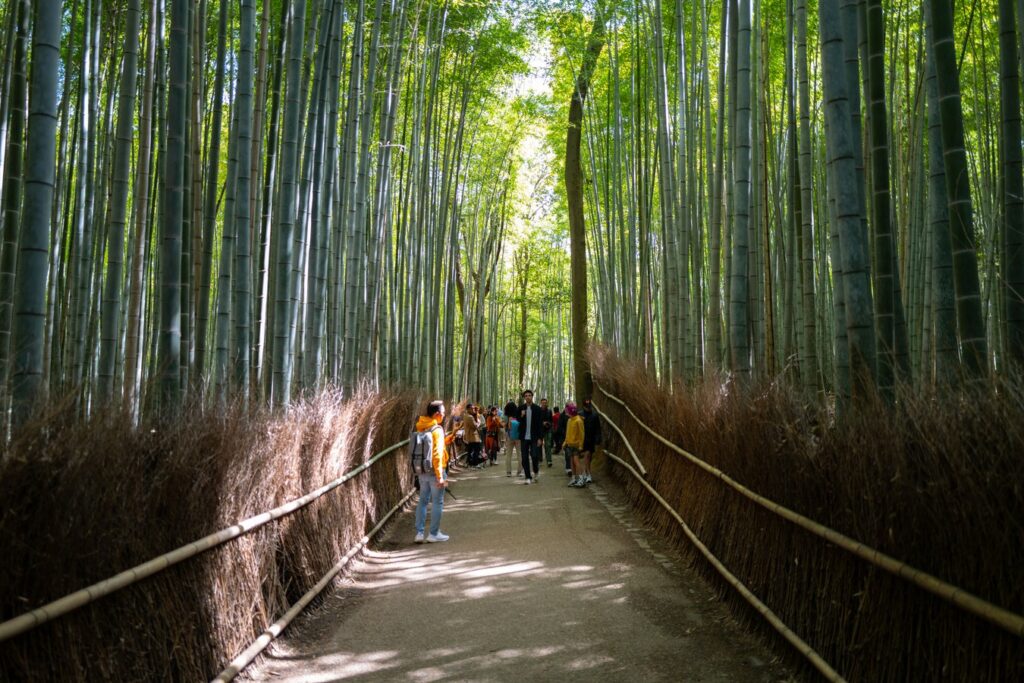 The Arashiyama Bamboo Path in Kyoto offers a serene escape, blending natural beauty with cultural heritage in a picturesque forest setting.
The Arashiyama Bamboo Path in Kyoto offers a serene escape, blending natural beauty with cultural heritage in a picturesque forest setting. - Teshima: Nature Meets Contemporary Art
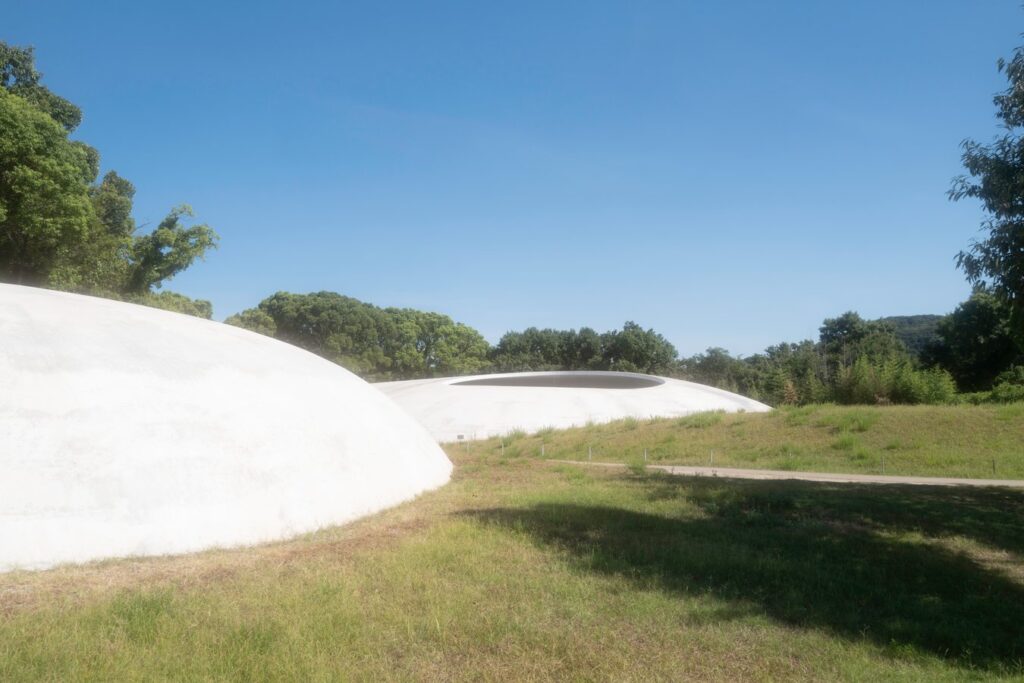 Teshima combines lush nature with contemporary art, featuring the Teshima Art Museum, scattered installations, and the Setouchi Triennale.
Teshima combines lush nature with contemporary art, featuring the Teshima Art Museum, scattered installations, and the Setouchi Triennale. - Kakigori: Japan’s Shaved Ice Tradition
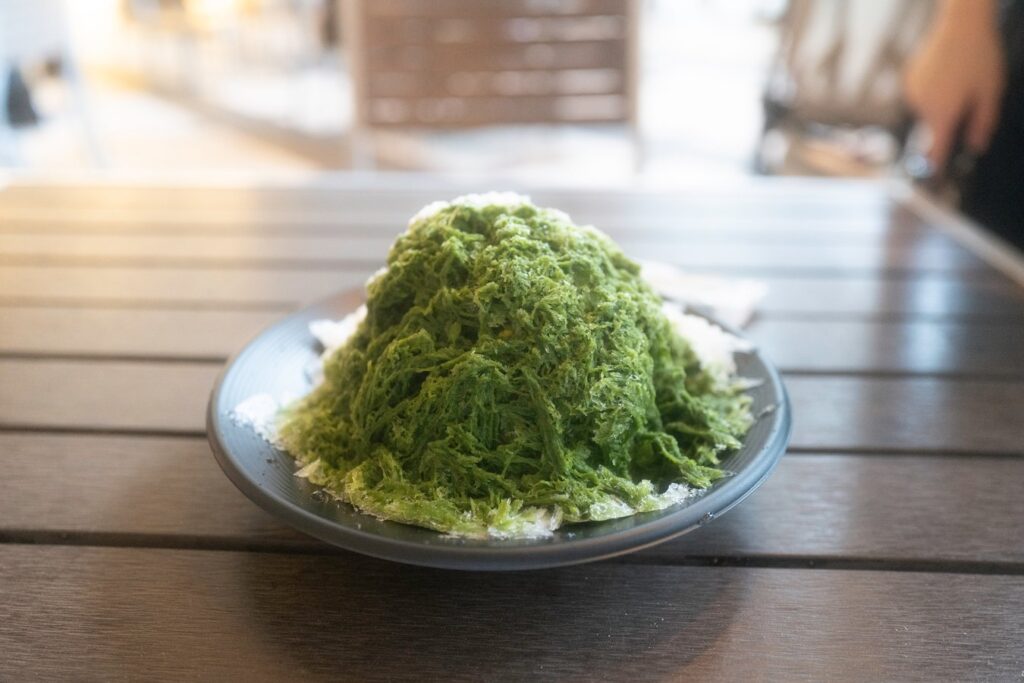 Kakigori is Japan’s shaved ice dessert, known for its fluffy texture, unique flag, and diverse flavors.
Kakigori is Japan’s shaved ice dessert, known for its fluffy texture, unique flag, and diverse flavors. - The Art of Traditional Japanese Wood Joinery
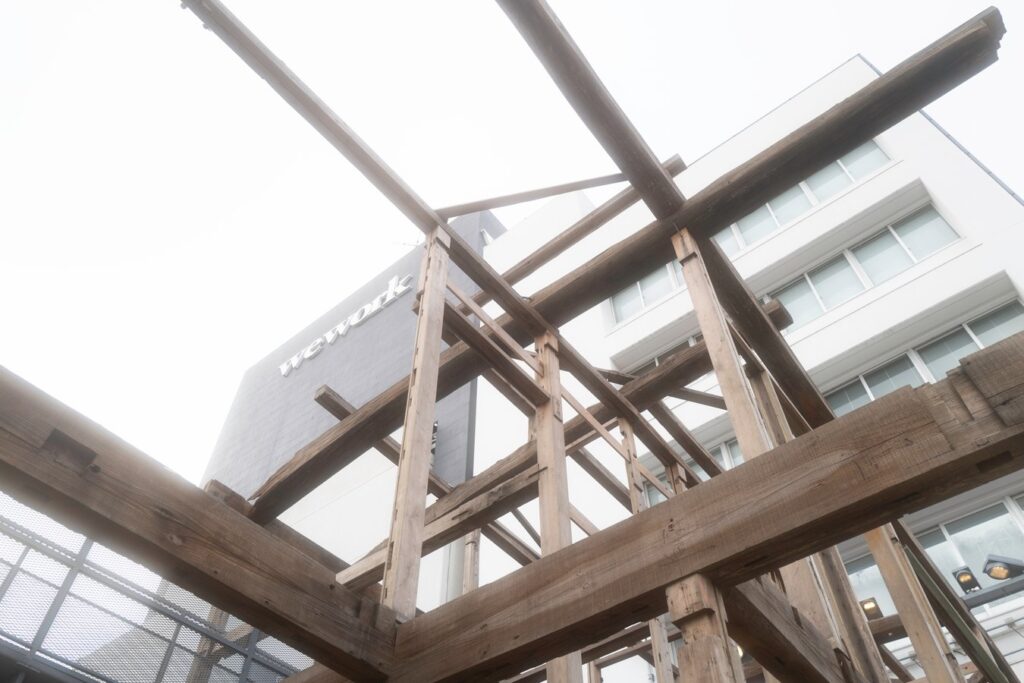 Traditional Japanese wood joinery showcases precision and artistry, using interlocking joints without nails or adhesives in architecture and furniture making.
Traditional Japanese wood joinery showcases precision and artistry, using interlocking joints without nails or adhesives in architecture and furniture making. - Shibuya Stream: Tokyo’s Modern Lifestyle Hub
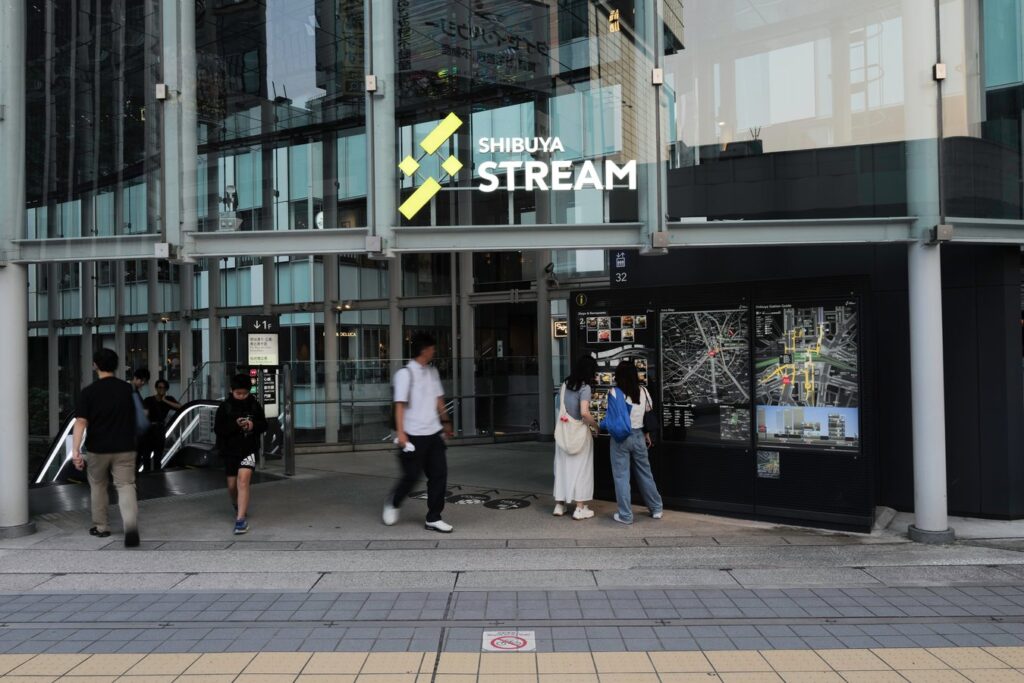 Shibuya Stream combines urban renewal with shopping, dining, and green spaces, revitalizing the Shibuya River.
Shibuya Stream combines urban renewal with shopping, dining, and green spaces, revitalizing the Shibuya River. - Tsukiji Outer Market: Tokyo’s Food Hub
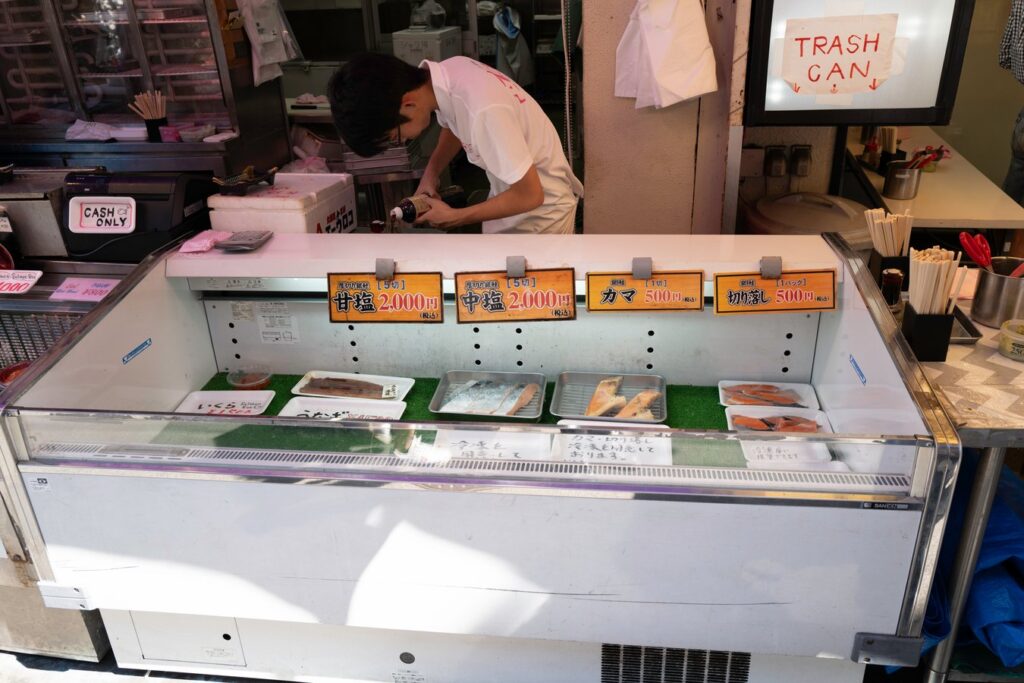 Tsukiji Outer Market blends wholesale and retail shops, offering ready-to-eat sushi and smaller portions for visitors.
Tsukiji Outer Market blends wholesale and retail shops, offering ready-to-eat sushi and smaller portions for visitors. - Nishiki Market: Kyoto’s Historic Culinary Hub
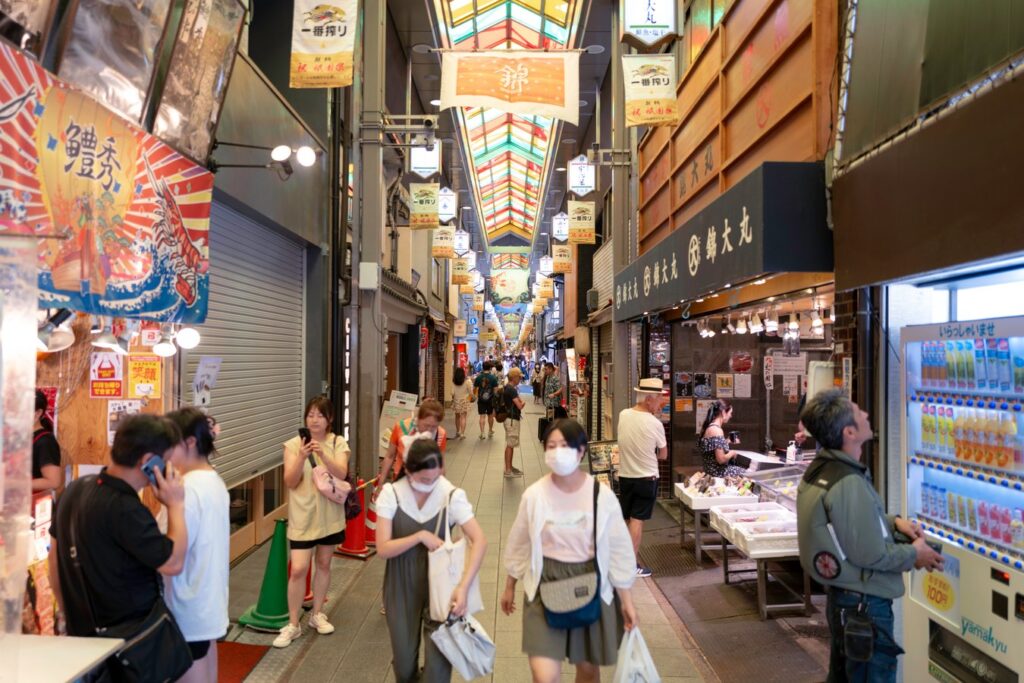 Nishiki Market in Kyoto offers 130 vendors along a narrow 400-meter lane, blending history with culinary tradition.
Nishiki Market in Kyoto offers 130 vendors along a narrow 400-meter lane, blending history with culinary tradition. - Fukuoka’s Yatai Stalls: A Culinary Landmark
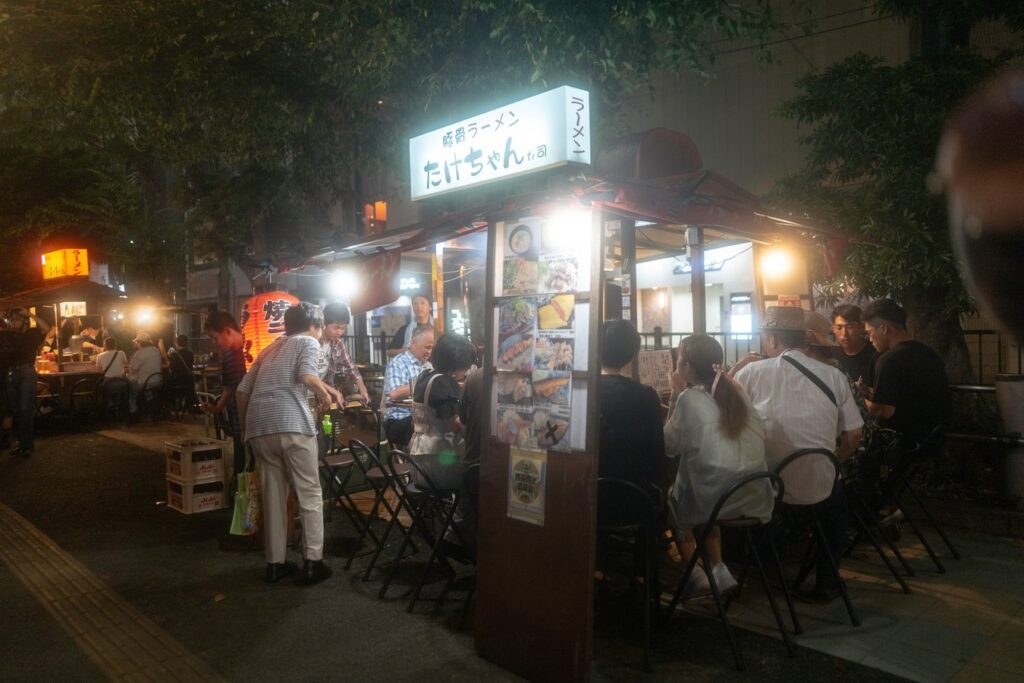 Fukuoka’s yatai stalls offer street food, communal seating, and a lively atmosphere, with locations like Nakasu Island showcasing this unique culinary tradition.
Fukuoka’s yatai stalls offer street food, communal seating, and a lively atmosphere, with locations like Nakasu Island showcasing this unique culinary tradition. - Kawagoe: Saitama’s Historic Edo Town
 Kawagoe in Saitama offers Edo-period charm with traditional architecture, cultural festivals, delicious street food, and unique shopping opportunities.
Kawagoe in Saitama offers Edo-period charm with traditional architecture, cultural festivals, delicious street food, and unique shopping opportunities. - Kabukicho: Shinjuku’s Nightlife Hub
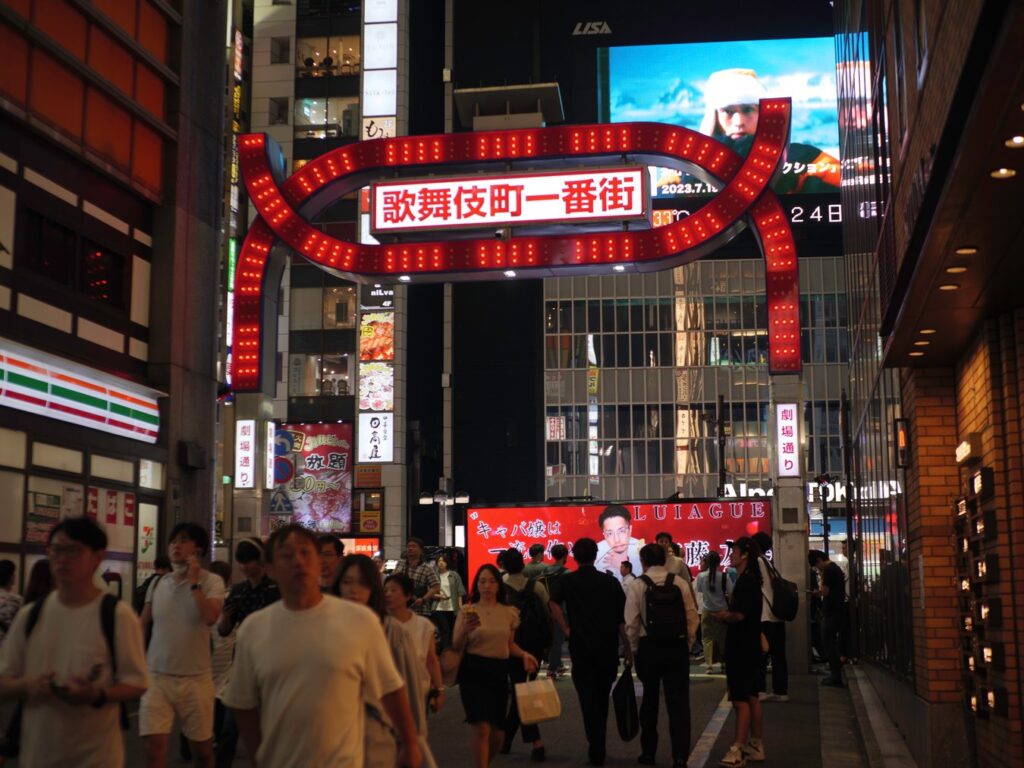 Kabukicho in Shinjuku blends neon-lit nightlife with nearby historic alleys, modern onsen, and entertainment hubs like Kabukicho Tower.
Kabukicho in Shinjuku blends neon-lit nightlife with nearby historic alleys, modern onsen, and entertainment hubs like Kabukicho Tower. - Saizeriya: Affordable Italian Dining in Japan
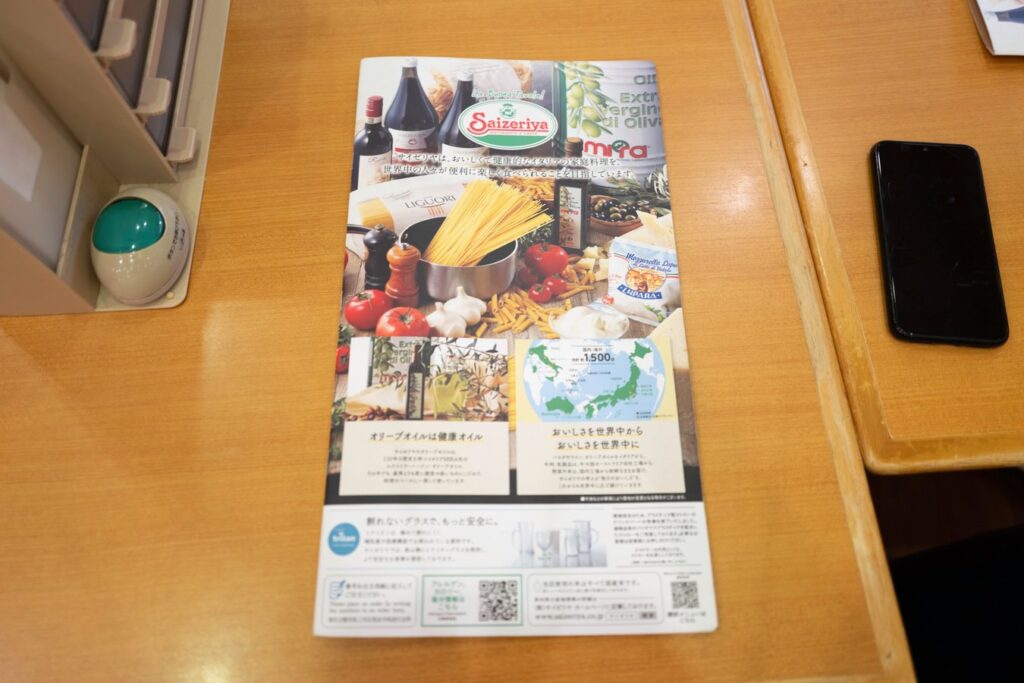 Saizeriya offers affordable Italian-inspired cuisine with a Japanese twist, featuring pizzas, pastas, and doria in a casual dining atmosphere.
Saizeriya offers affordable Italian-inspired cuisine with a Japanese twist, featuring pizzas, pastas, and doria in a casual dining atmosphere. - Tokyu Plaza: Harajuku’s Architectural Landmark
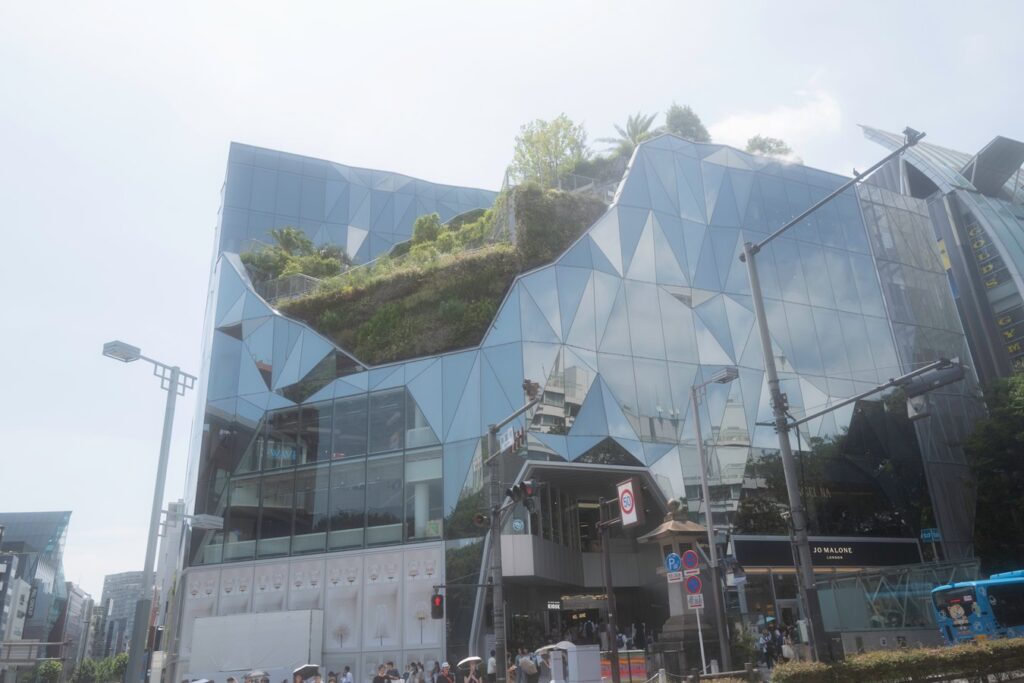 Tokyu Plaza in Harajuku is a multi-story shopping complex featuring a mirrored entrance, rooftop garden, and unique architecture.
Tokyu Plaza in Harajuku is a multi-story shopping complex featuring a mirrored entrance, rooftop garden, and unique architecture. - Ameyoko Market: Ueno’s Vibrant Street Scene
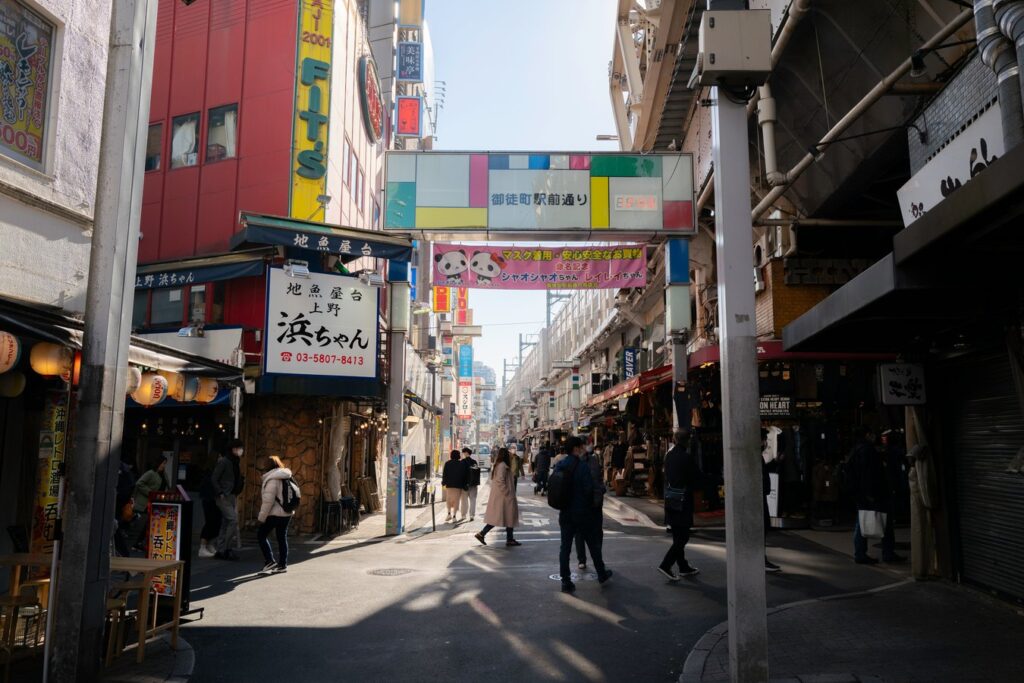 Ameya-Yokocho in Ueno offers seafood, street food, and international cuisines in a vibrant post-war market setting.
Ameya-Yokocho in Ueno offers seafood, street food, and international cuisines in a vibrant post-war market setting. - Shin-Okubo: Tokyo’s Korean Hub
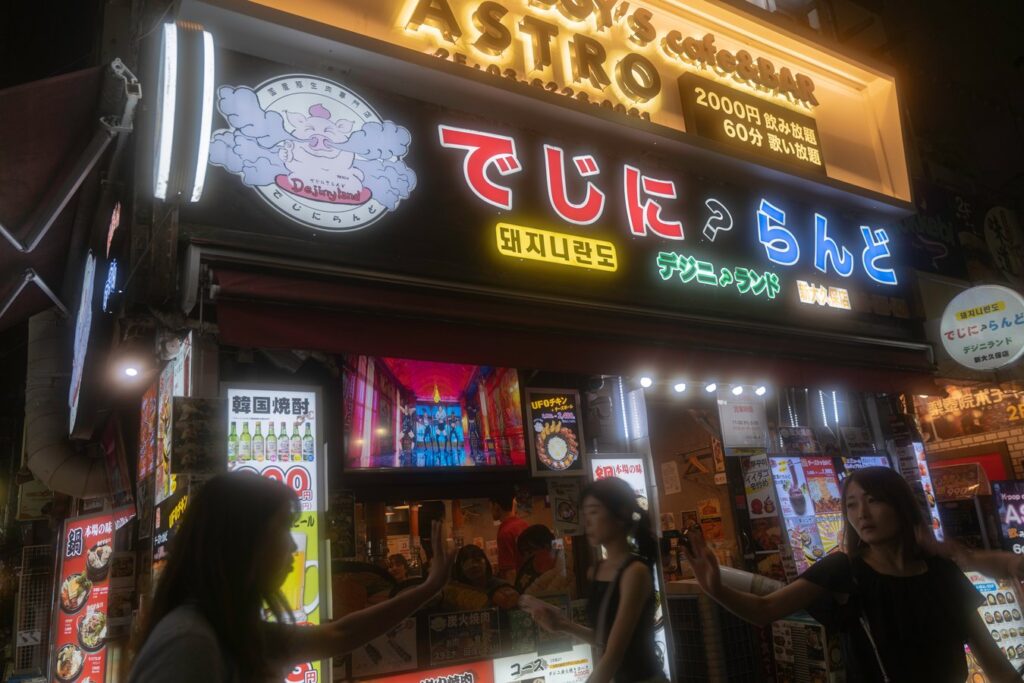 Shin-Okubo offers Korean cuisine, K-pop merchandise, K-beauty shops, and diverse cultures in a lively Tokyo neighborhood.
Shin-Okubo offers Korean cuisine, K-pop merchandise, K-beauty shops, and diverse cultures in a lively Tokyo neighborhood. - Shinjuku Golden Gai: A Timeless Nightlife Haven
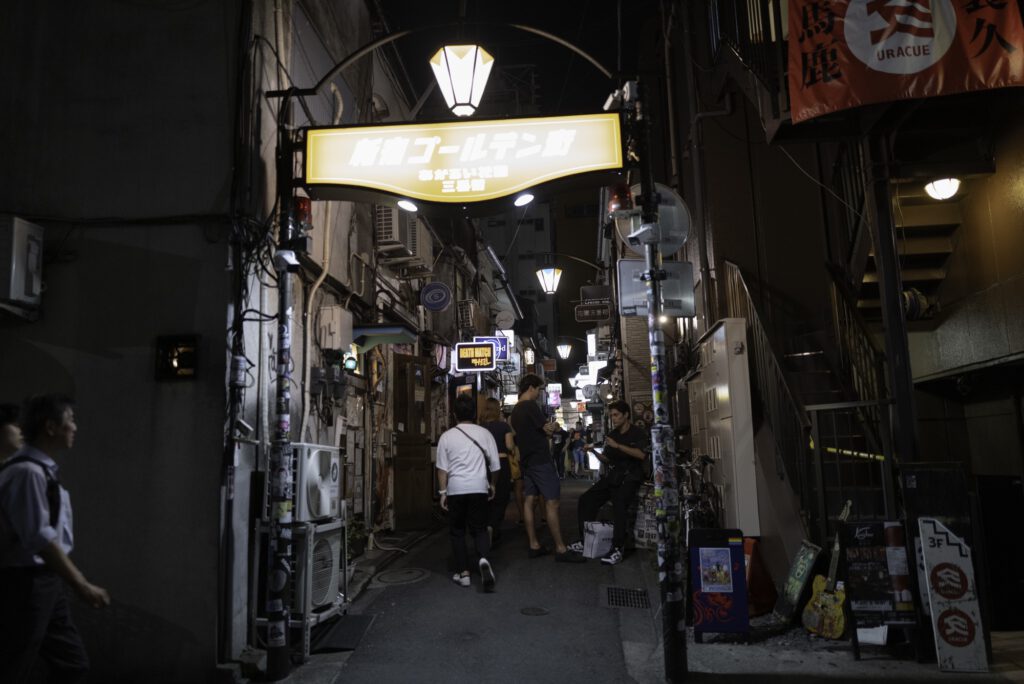 Golden Gai in Shinjuku offers a nostalgic nightlife experience with intimate bars, historic architecture, and nearby dining options.
Golden Gai in Shinjuku offers a nostalgic nightlife experience with intimate bars, historic architecture, and nearby dining options. - Benesse Art Site Naoshima: Where Art Meets Nature
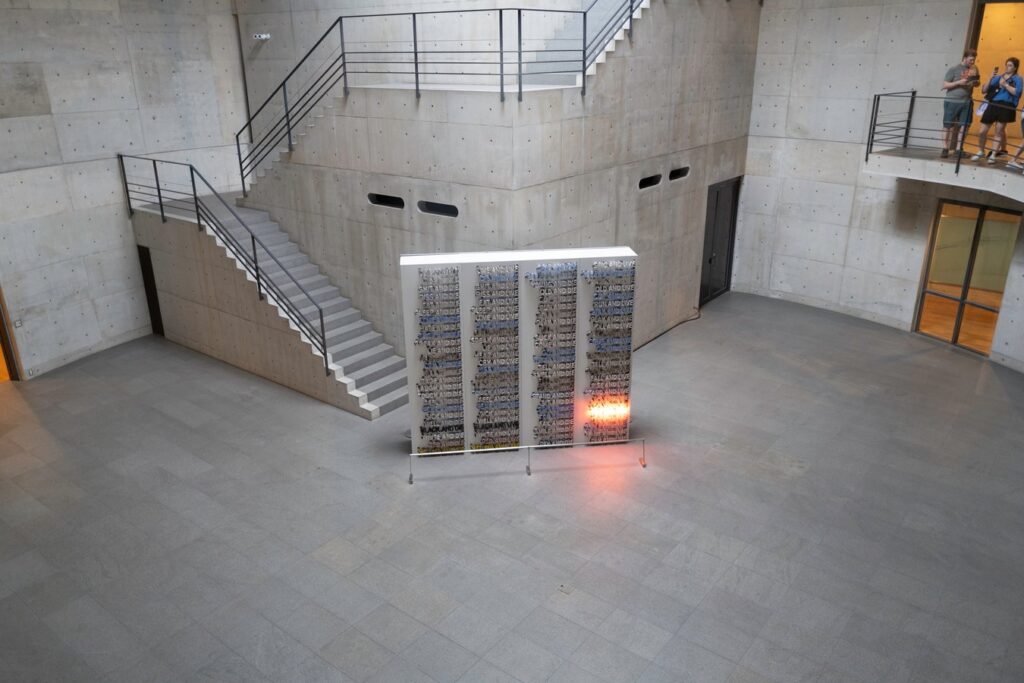 Benesse Art Site Naoshima offers contemporary art, architecture by Tadao Ando, and natural harmony across Naoshima, Teshima, and Inujima.
Benesse Art Site Naoshima offers contemporary art, architecture by Tadao Ando, and natural harmony across Naoshima, Teshima, and Inujima. - Okuno Building Ginza: A Historic Landmark of Art and Antiques
 The Okuno Building in Ginza, built in the early 20th century, features antique shops, art galleries, and the unique Room 306 Project, blending history and creativity.
The Okuno Building in Ginza, built in the early 20th century, features antique shops, art galleries, and the unique Room 306 Project, blending history and creativity. - Sakura: Japan’s Blossoms of Renewal
 Sakura, Japan’s cherry blossoms, symbolize impermanence and renewal. Learn about hanami traditions and the best viewing spots in Tokyo.
Sakura, Japan’s cherry blossoms, symbolize impermanence and renewal. Learn about hanami traditions and the best viewing spots in Tokyo. - Animate Akihabara: A Hub for Anime Fans
 Animate Akihabara offers anime merchandise, exclusive events, and a central location in Tokyo’s anime district.
Animate Akihabara offers anime merchandise, exclusive events, and a central location in Tokyo’s anime district. - Tokyo Photographic Art Museum in Ebisu
 Located in Ebisu, the Tokyo Photographic Art Museum showcases global photographic art, offering exhibitions, workshops, and inspiration.
Located in Ebisu, the Tokyo Photographic Art Museum showcases global photographic art, offering exhibitions, workshops, and inspiration. - Roppongi Hills: Art, Views, and Upscale Living
 Roppongi Hills combines art, panoramic views, luxury shopping, and dining, with seasonal charm in its Mori Garden.
Roppongi Hills combines art, panoramic views, luxury shopping, and dining, with seasonal charm in its Mori Garden. - Tokyo Opera City Art Gallery: A Hub for Contemporary Art
 Tokyo Opera City Art Gallery features rotating exhibitions and supports emerging Japanese artists through its project N series.
Tokyo Opera City Art Gallery features rotating exhibitions and supports emerging Japanese artists through its project N series. - Shinjuku Gyoen: A Historic Garden in Tokyo
 Shinjuku Gyoen National Garden blends traditional Japanese, French, and English garden styles, offering seasonal beauty and a tranquil escape in Tokyo.
Shinjuku Gyoen National Garden blends traditional Japanese, French, and English garden styles, offering seasonal beauty and a tranquil escape in Tokyo. - Inujima Island: Art, History, and Nature
 Inujima Island in Okayama blends art, history, and nature, featuring granite legacy, industrial remnants, and eco-friendly art museums.
Inujima Island in Okayama blends art, history, and nature, featuring granite legacy, industrial remnants, and eco-friendly art museums. - Ginza Six: Tokyo’s Modern Shopping Landmark
 Ginza Six in Tokyo combines luxury shopping, dining, modern art, and cultural spaces in a sophisticated architectural setting.
Ginza Six in Tokyo combines luxury shopping, dining, modern art, and cultural spaces in a sophisticated architectural setting. - Kiba Park: A Recreational Haven in Tokyo
 Kiba Park features picnic areas, tennis courts, a barbecue space, the Museum of Contemporary Art Tokyo, and botanical gardens.
Kiba Park features picnic areas, tennis courts, a barbecue space, the Museum of Contemporary Art Tokyo, and botanical gardens. - Takoyaki: Osaka’s Iconic Street Snack
 Takoyaki, an octopus-filled street snack from Osaka, is a beloved Japanese dish with global variations and cultural significance.
Takoyaki, an octopus-filled street snack from Osaka, is a beloved Japanese dish with global variations and cultural significance. - Monnaka Coffee: A Warm Café Experience in TokyoMonnaka Coffee in Monzen Nakacho offers freshly roasted coffee, brulee desserts, and a vibrant community-focused space.
- Kiyosumi-Shirakawa: Tokyo’s Coffee District
 Kiyosumi-Shirakawa is Tokyo’s coffee haven, featuring standout cafes like Koffee Mameya Kakeru, Blue Bottle Coffee, and more.
Kiyosumi-Shirakawa is Tokyo’s coffee haven, featuring standout cafes like Koffee Mameya Kakeru, Blue Bottle Coffee, and more. - Asakusa: Tokyo’s Cultural Core
 Asakusa is home to Sensoji Temple, Nakamise-dori shopping, omikuji fortune-telling, and rich traditions near the Sumida River.
Asakusa is home to Sensoji Temple, Nakamise-dori shopping, omikuji fortune-telling, and rich traditions near the Sumida River. - Yanaka Ginza: Tokyo’s Retro Shopping Street
 Yanaka Ginza preserves Japan’s retro shotengai charm, offering traditional shops, souvenirs, and a mid-20th-century atmosphere.
Yanaka Ginza preserves Japan’s retro shotengai charm, offering traditional shops, souvenirs, and a mid-20th-century atmosphere.


